7 February 2022
Palestinian histories. The links between the Franciscans and the local communities through the collections of the Terra Sancta Museum
Since they arrived in the Holy Land in the 13th century, the Franciscans have been closely involved in the lives of their contemporaries in areas which went well beyond spiritual and liturgical services. From giving medical care to opening schools, the Custody of the Holy Land has carried out many activities at the service of the local communities. They include the introduction and the development of major crafts, today considered essential elements of the Palestinian cultural heritage.
The Terra Sancta Museum traces this history by presenting in its future historical section several historic and artistic objects which bear witness to the local customs and everyday life over the centuries.
–
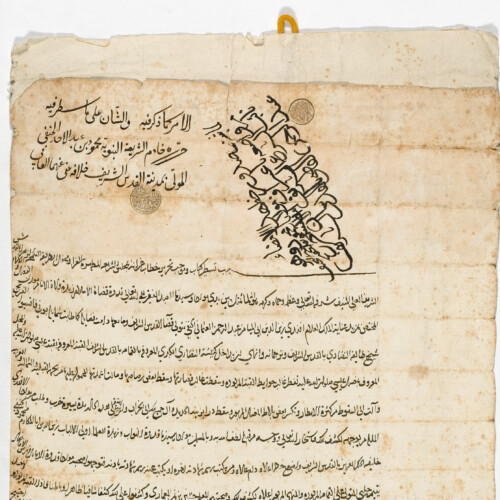
The firmans
The Terra Sancta Museum owns numerous official legal documents. Some of these, of particular historical importance, will be displayed. They include the firmans, the equivalent of laws issued by the rulers of countries under Muslim law, whereas the capitulations were a particular type of contract concluded between the Ottoman Empire and the European powers (especially France) which helped to improve the situation and the protection of Christians (local or pilgrims) in the Empire. These documents attest not only the relations between the Custody and the local powers but are above all precious evidence of the history of the Franciscans in the Holy Land as well as of the activities of the Friars in the different shrines in Palestine. Moreover, today, their juridical value is still recognized.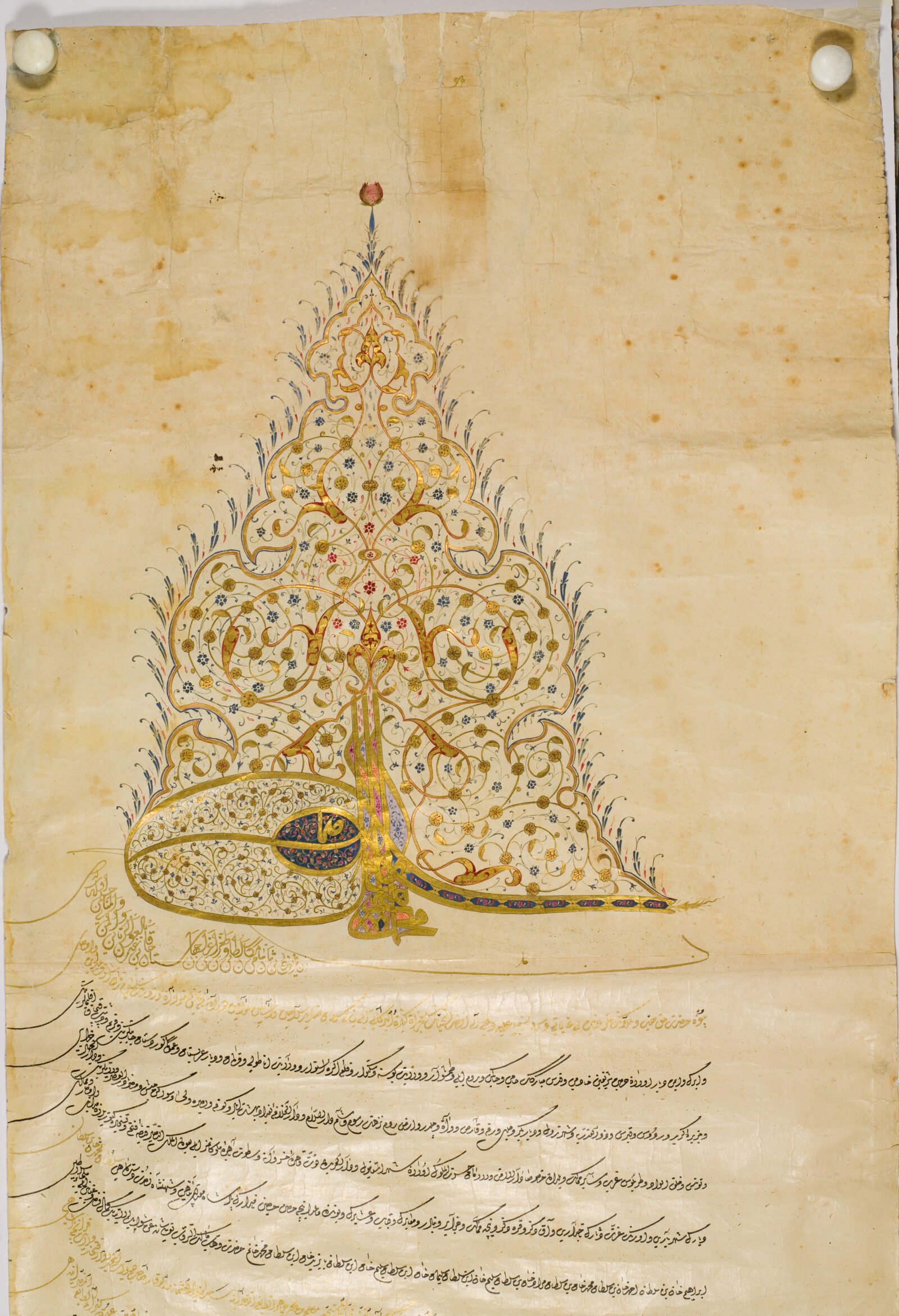
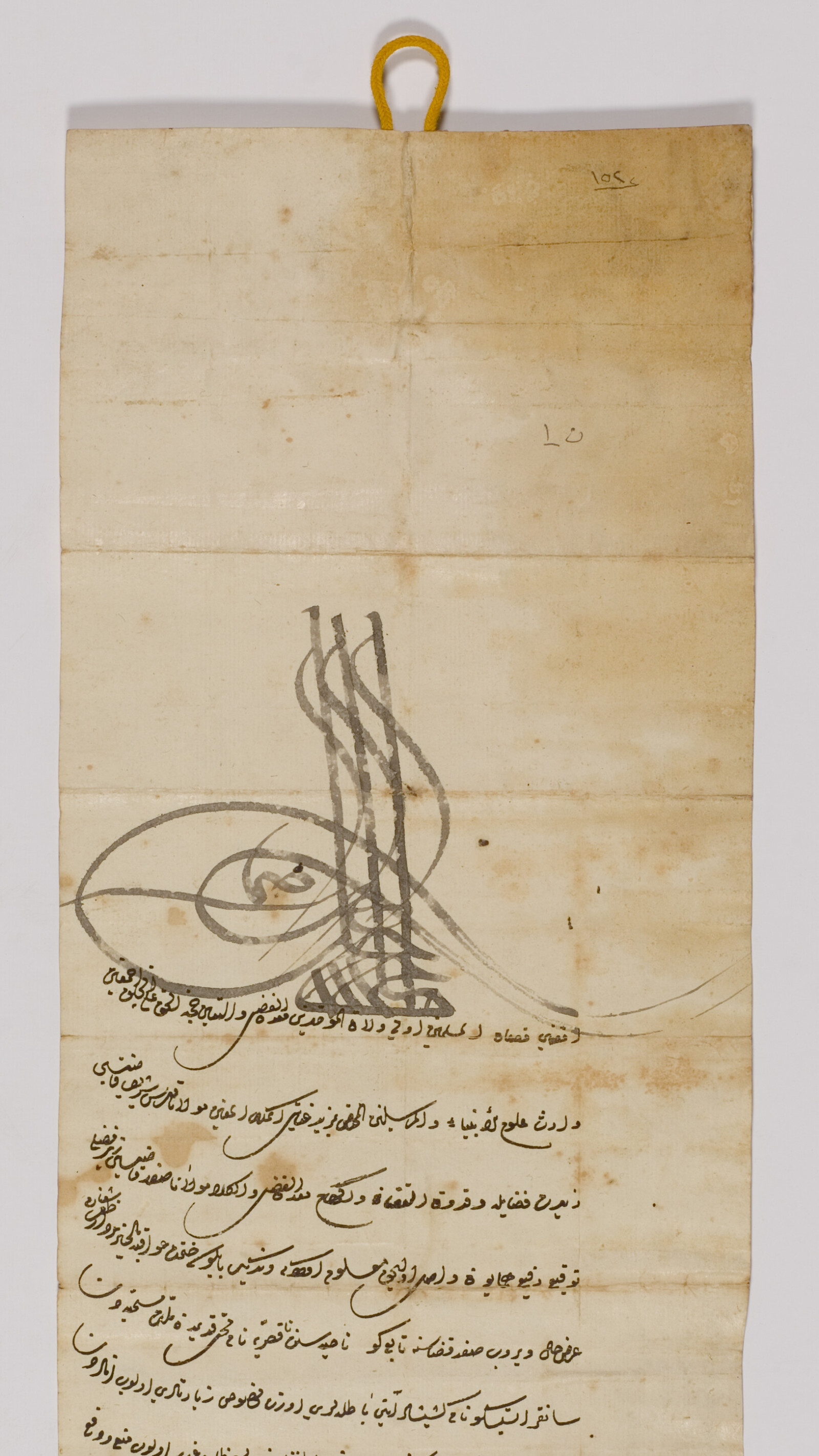
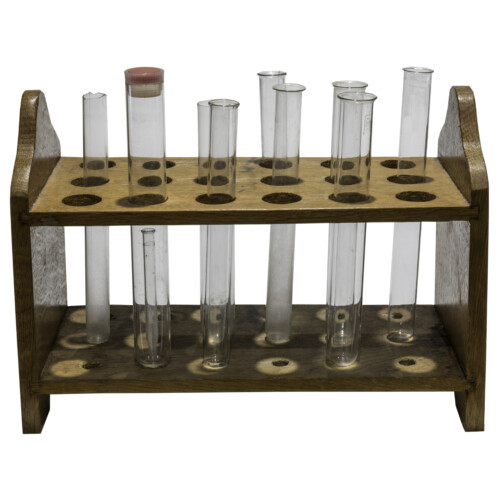
The pharmacy
In addition to craftsmanship, the friars also devote themselves to medicine for the sick. Many photos in the archives show the former pharmacy of St Saviour as well as friars giving treatment. These will be on display alongside a rich collection of more than four hundred majolica medicine jars from the 18th century, in an immersive setting offering a historical reconstruction of the pharmacy. More surprising, tongs for the Eucharist, used to give communion to the plague-stricken, will also be on show.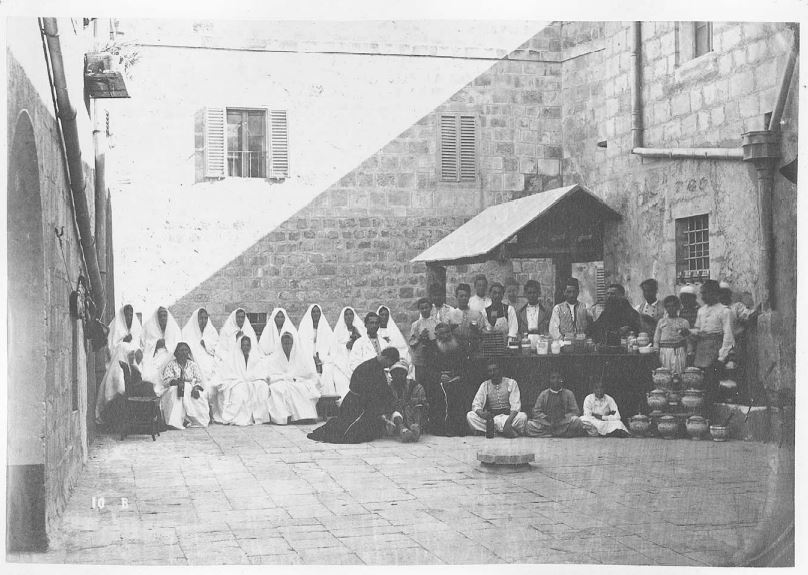
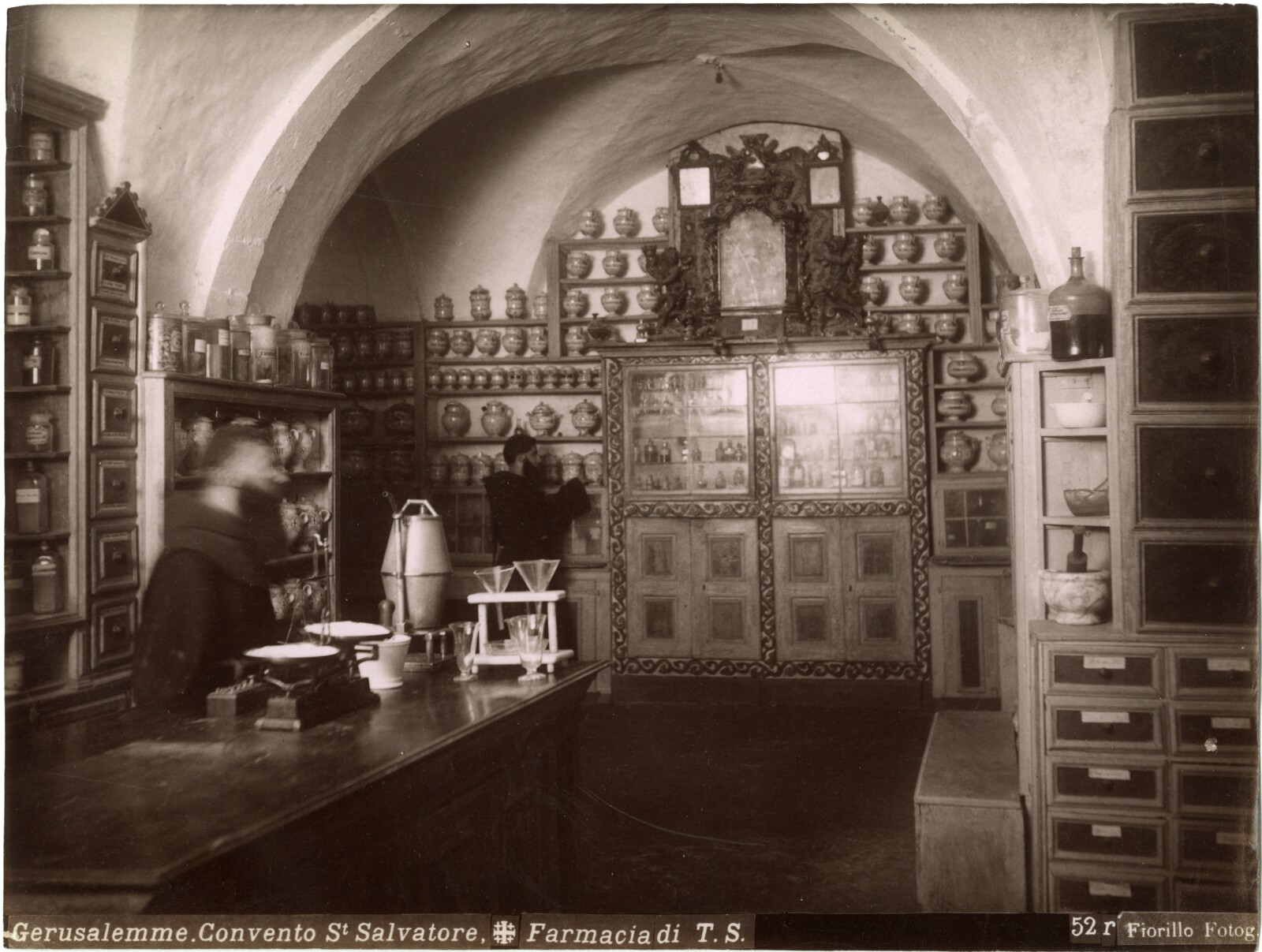
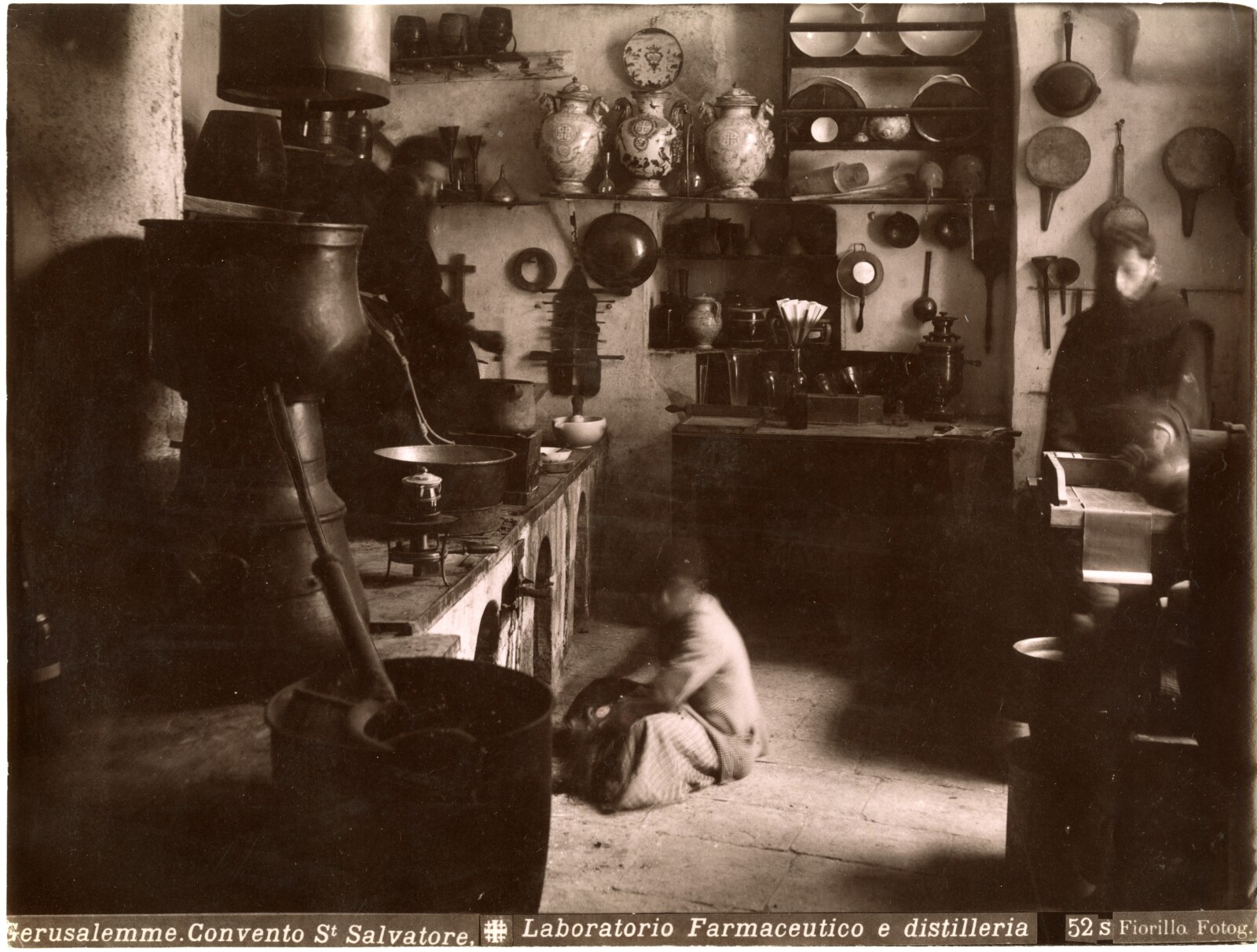
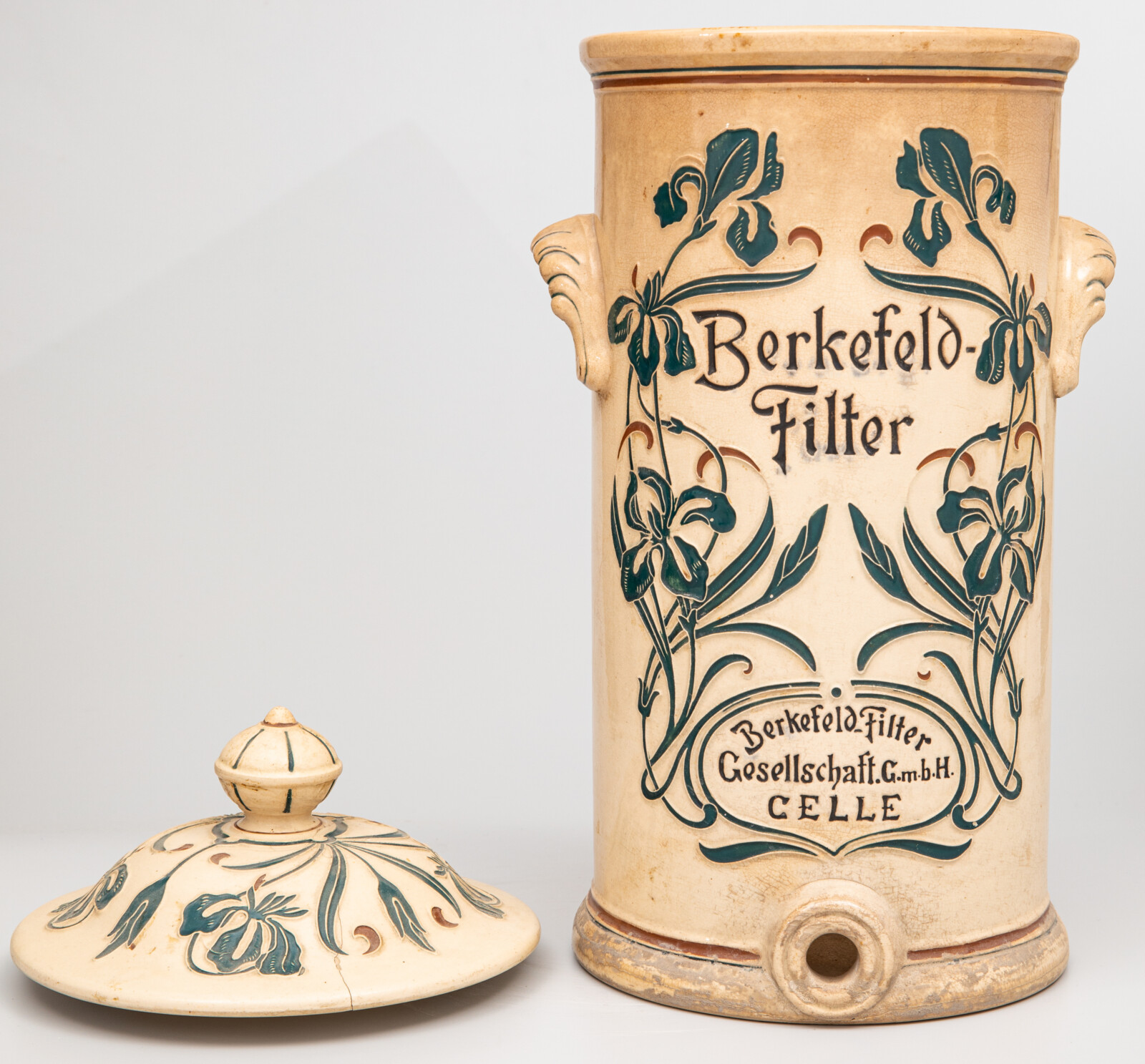
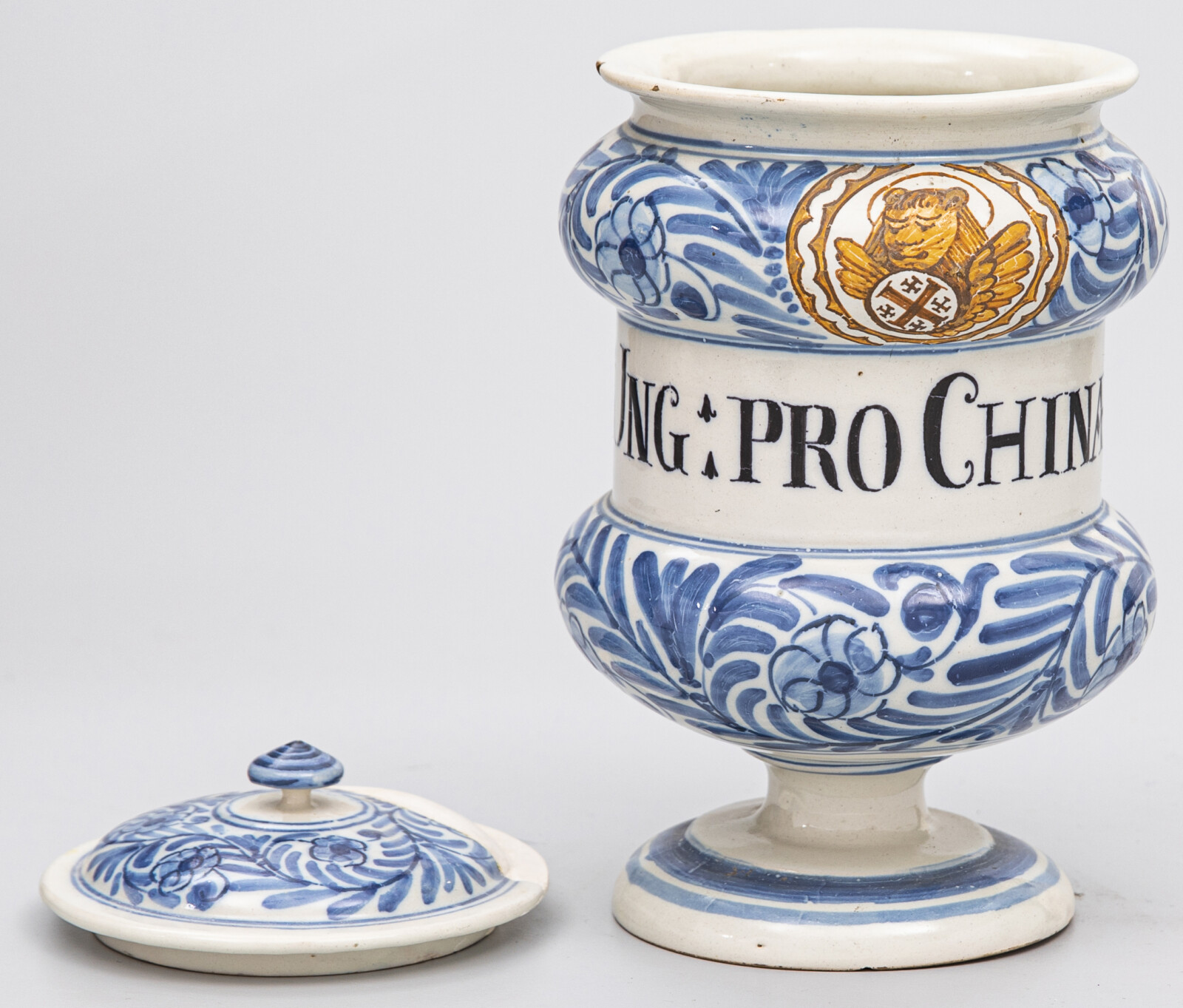
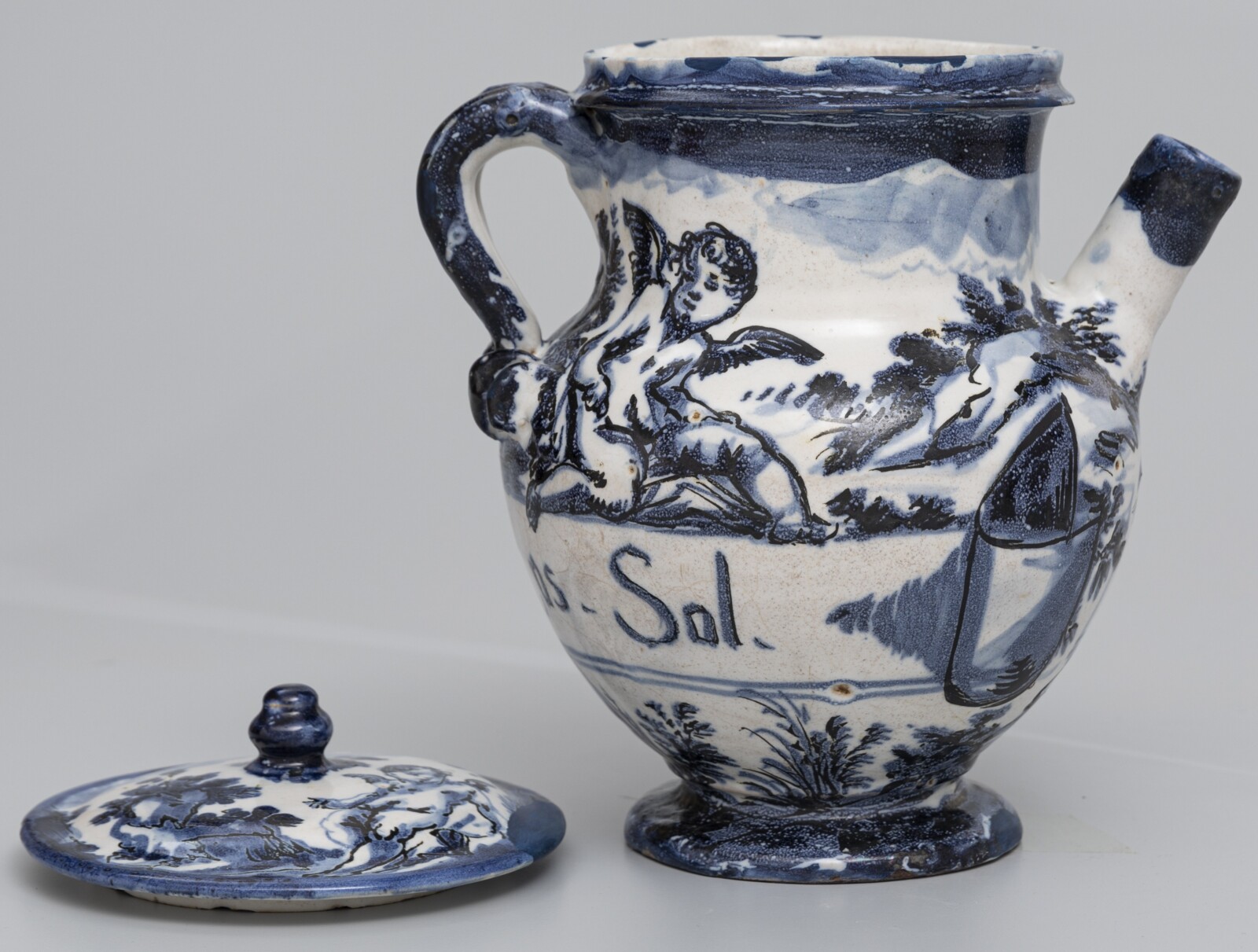
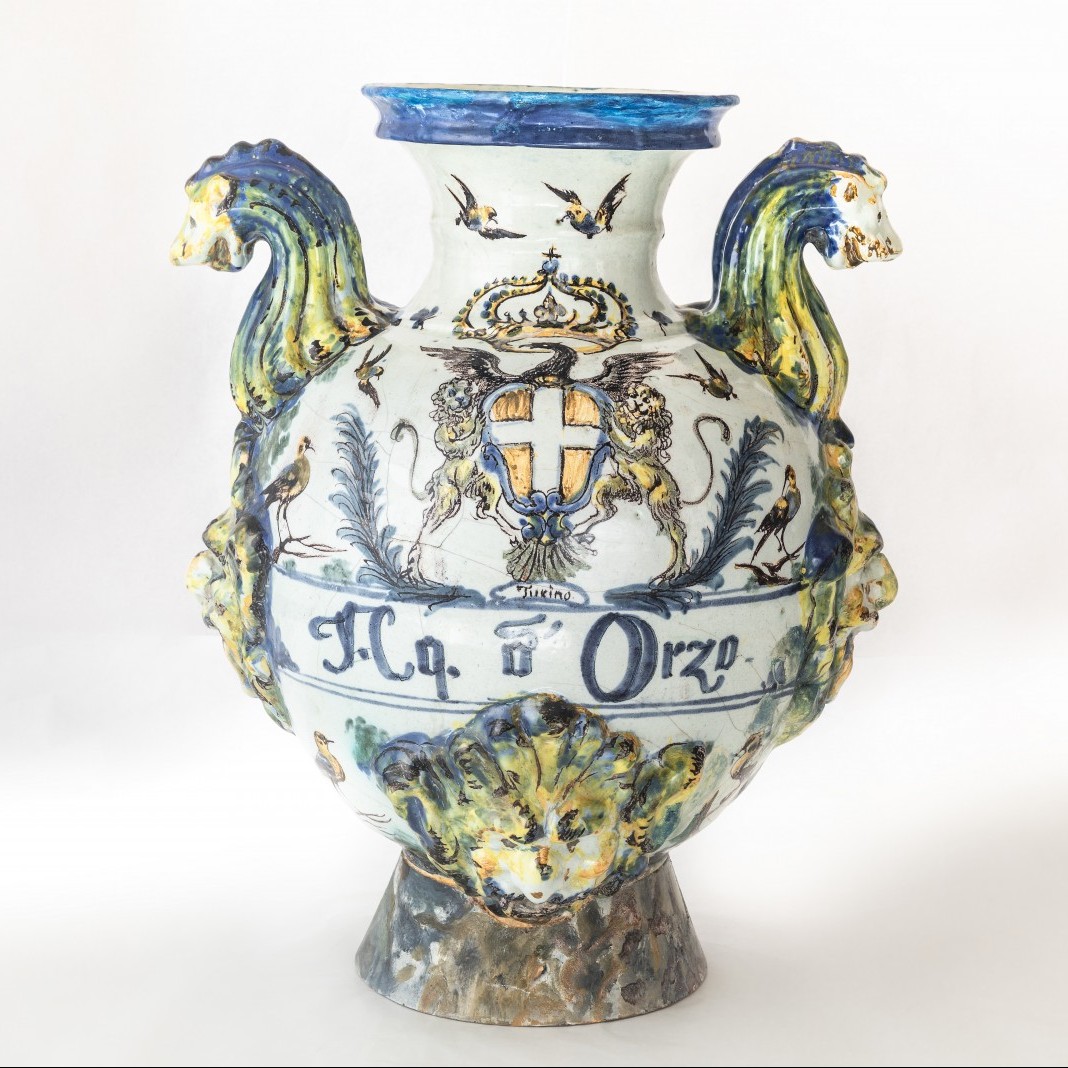
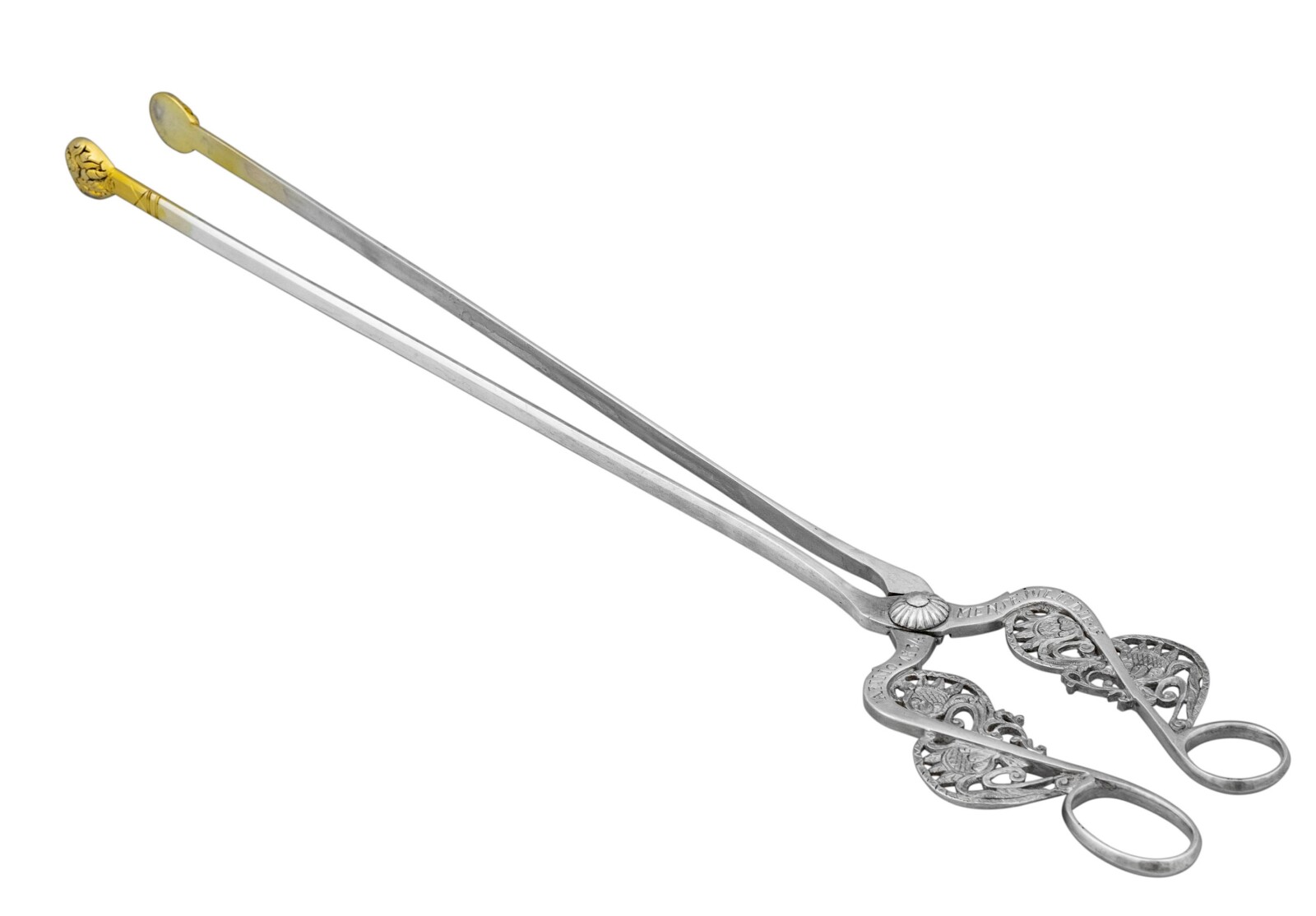
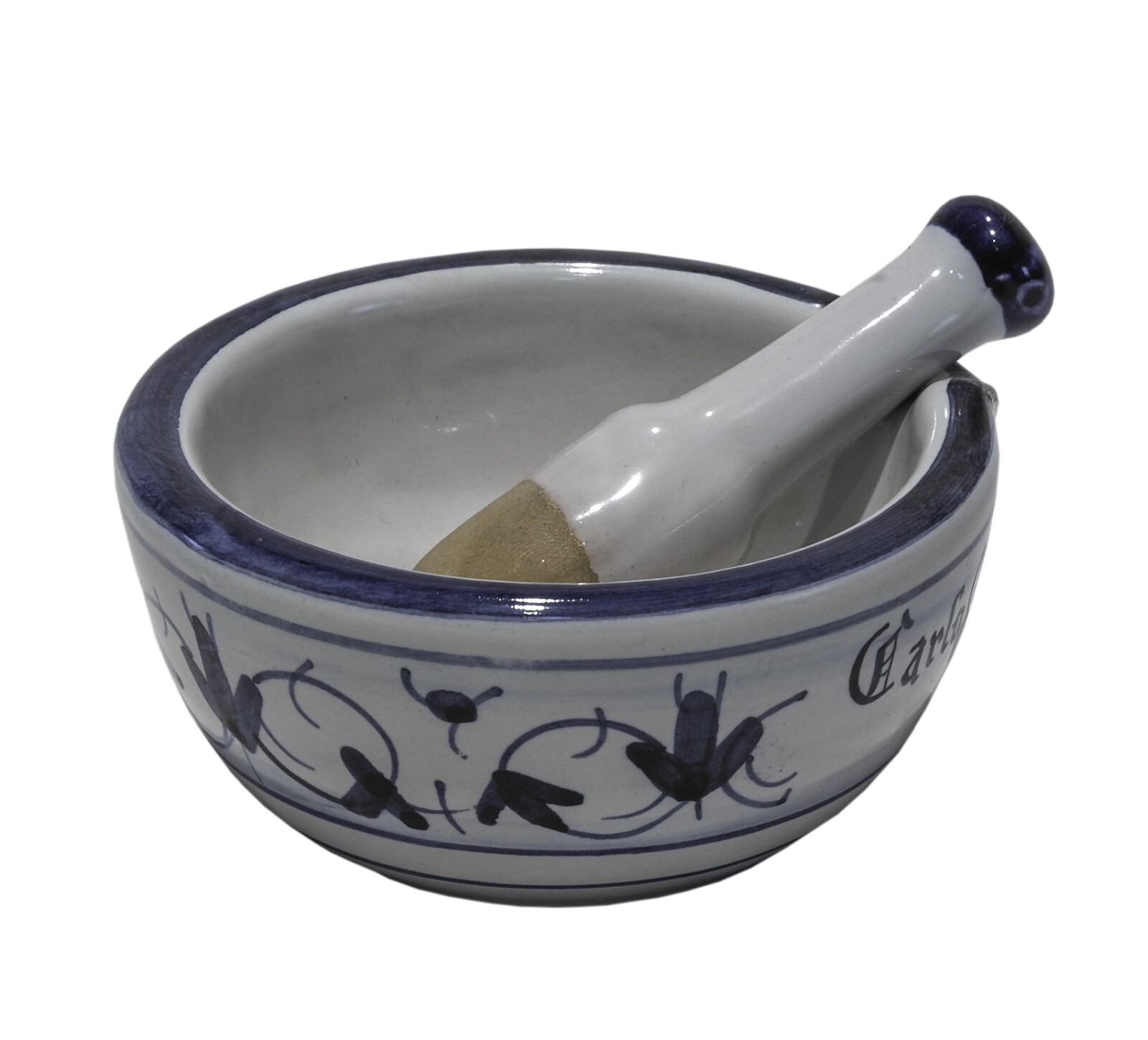
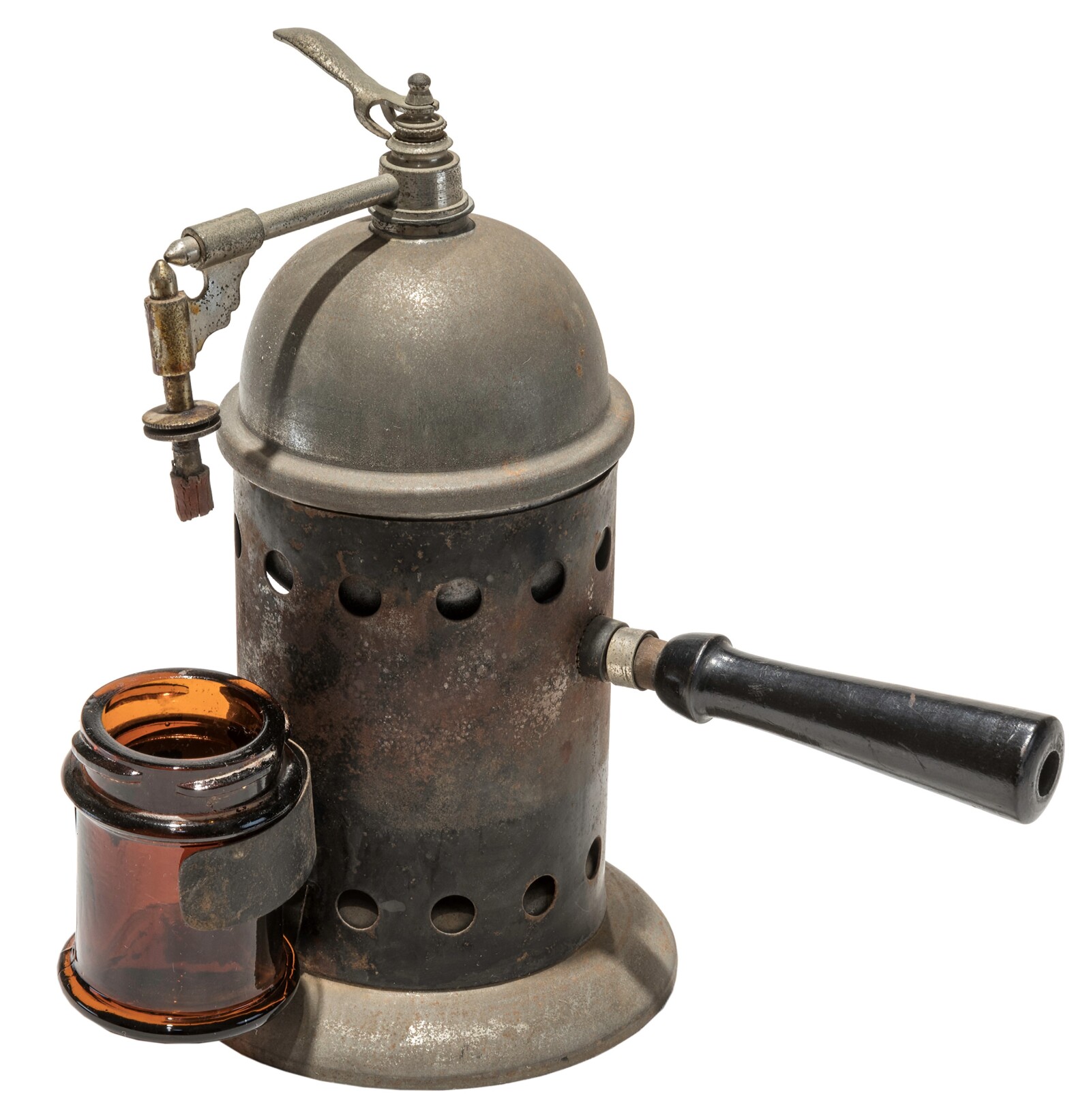
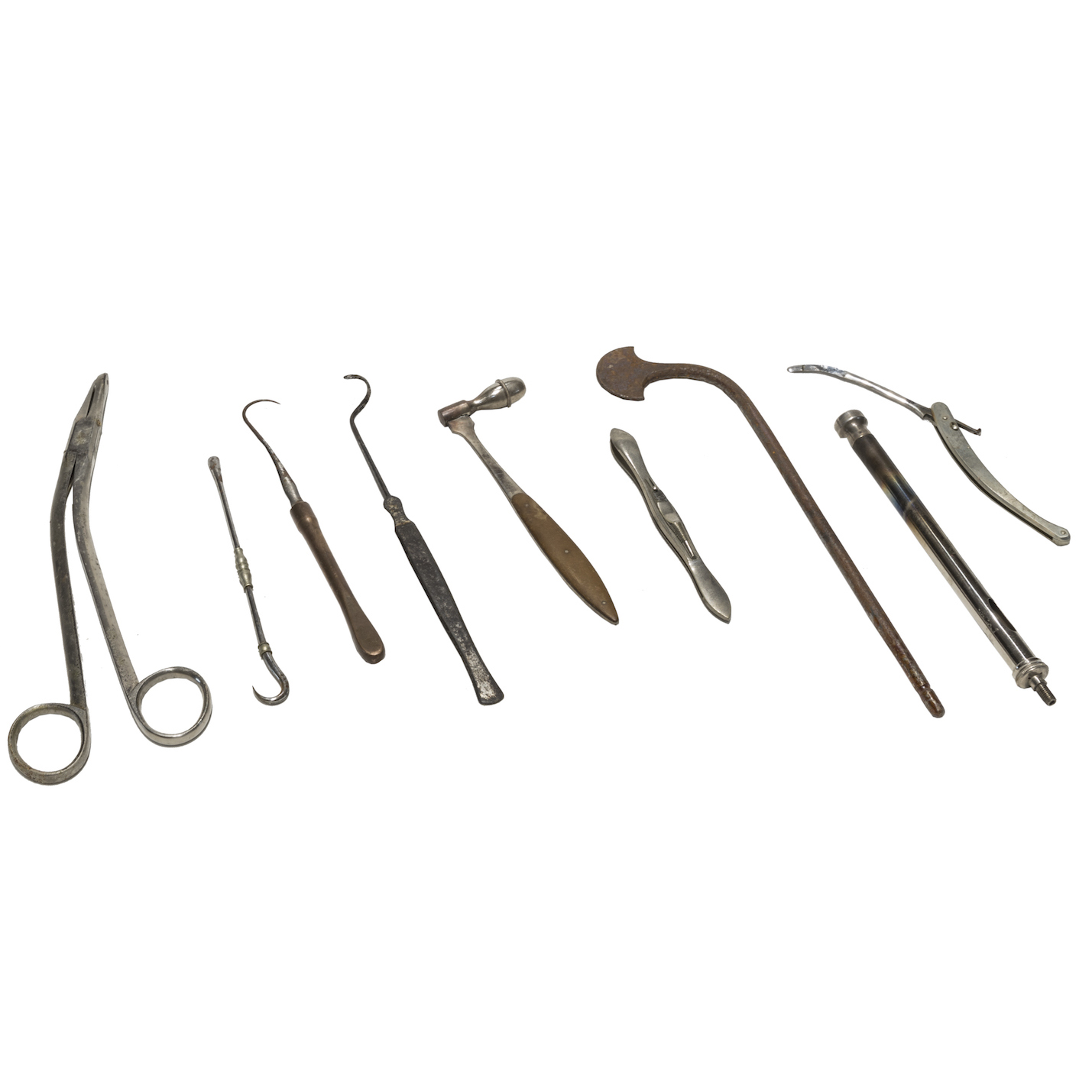
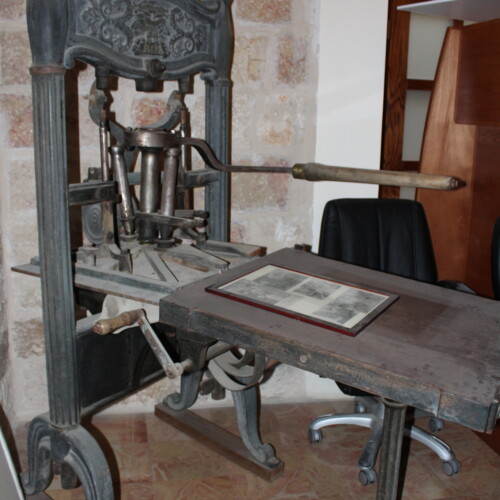
The printing press
In the 19th century, the Custody of the Holy Land installed in its buildings a printing press which had Arabic, Hebrew, Latin, Greek, Coptic and Armenian characters. Through its publications, it reveals numerous aspects of the lives of the inhabitants of Jerusalem in the 19th century. All sorts of works were printed there: the first book printed in 1847 was a catechism in Arabic and in Italian but later it printed everything from restaurant menus to tourist guides as well as visiting cards. The registers also mention the printing of Korans as well as the times of Ramadan for the Sheikhs of the Jerusalem mosques, sometimes printed free of charge!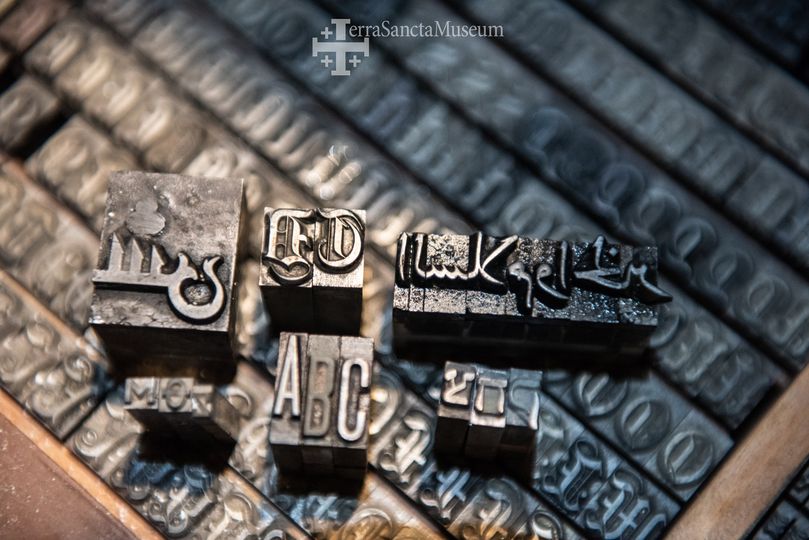
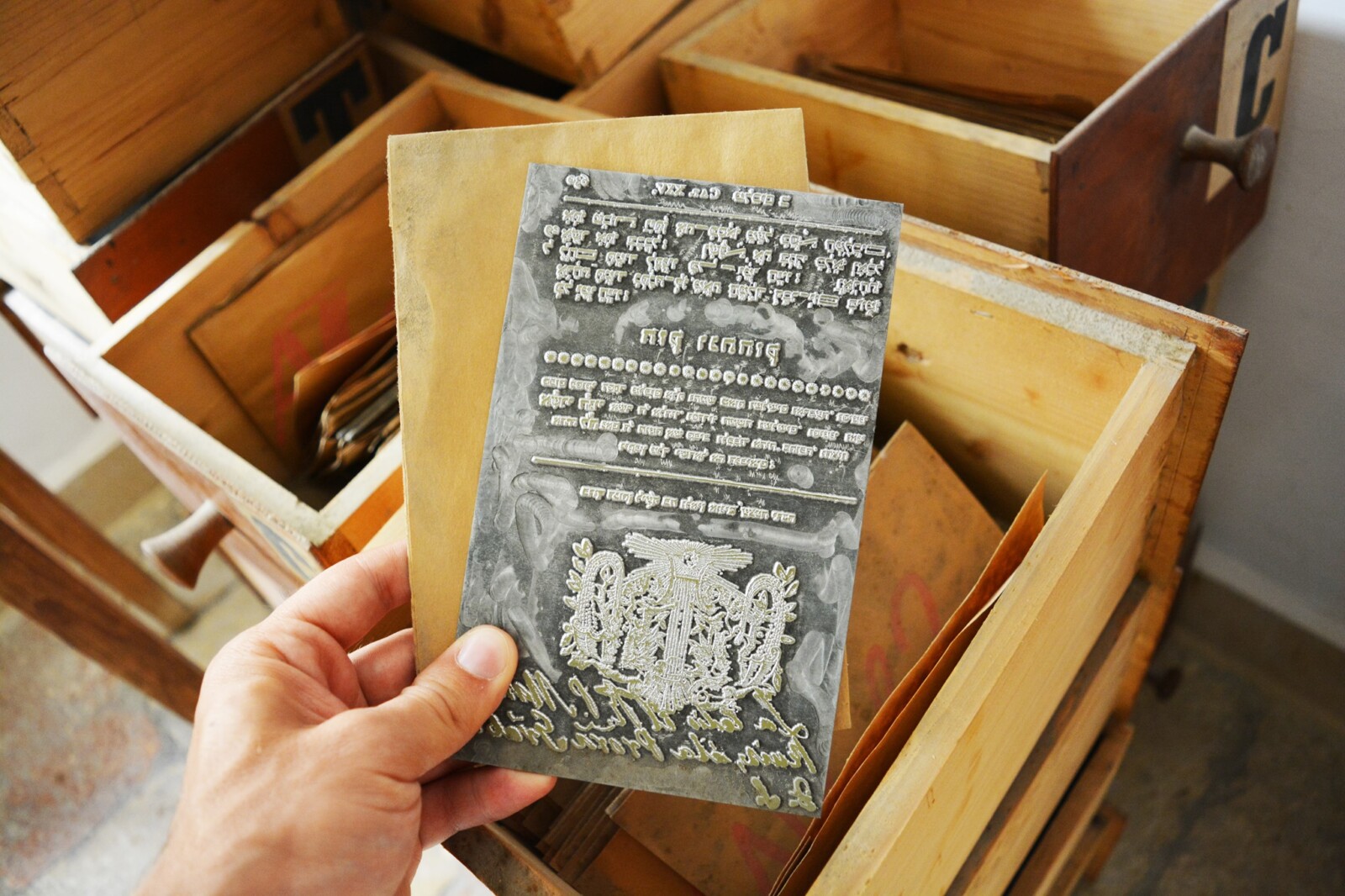
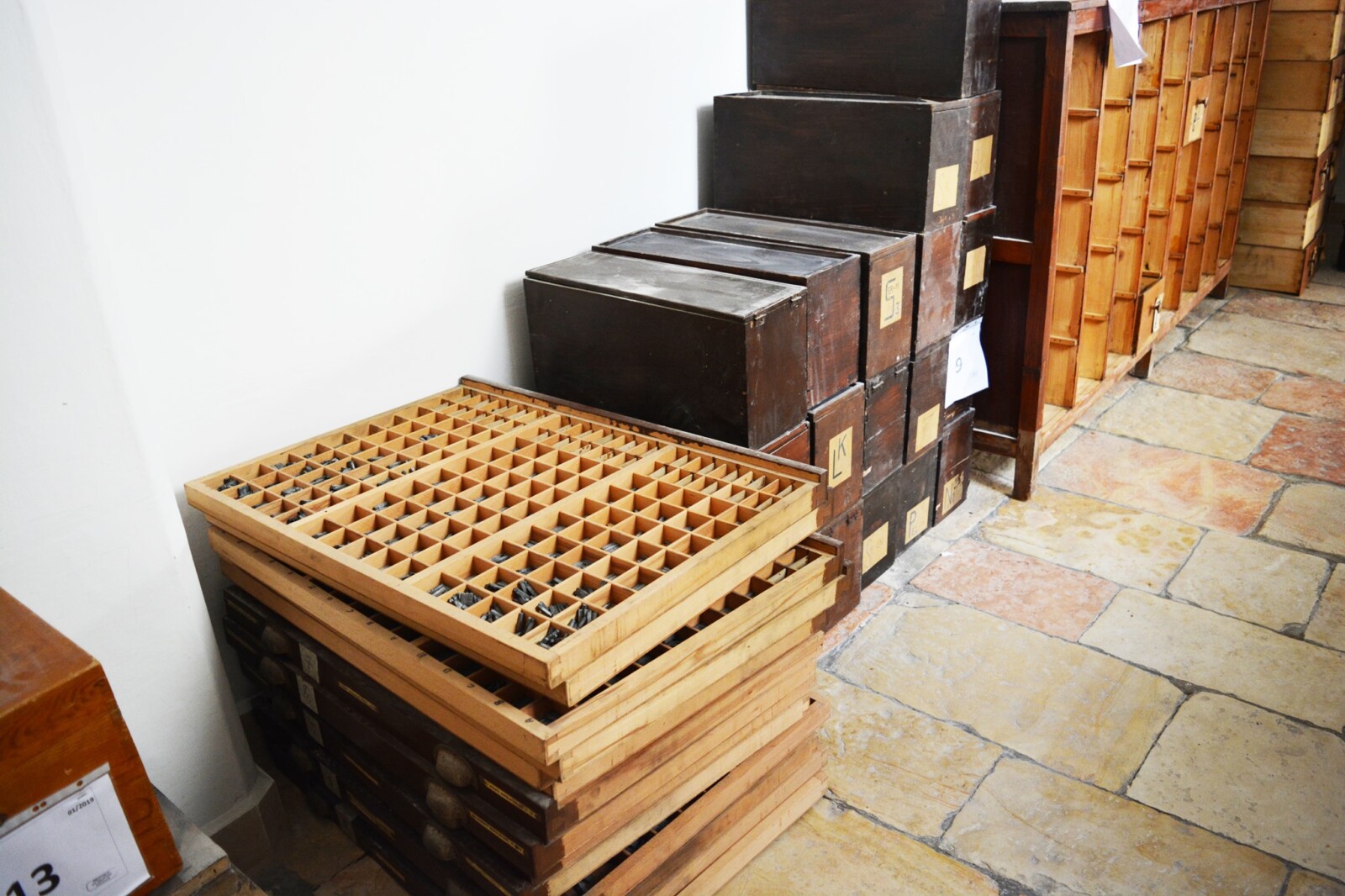
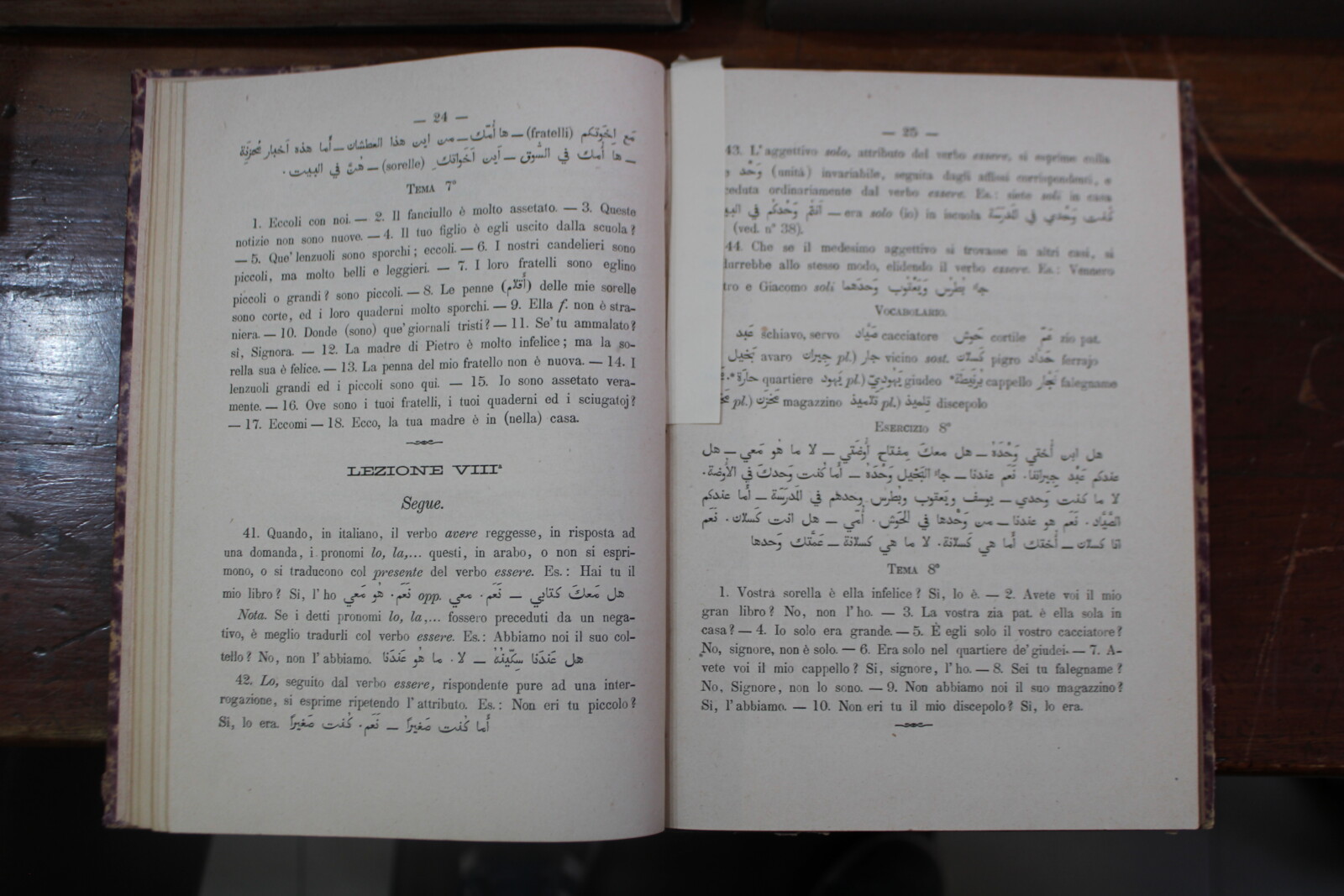
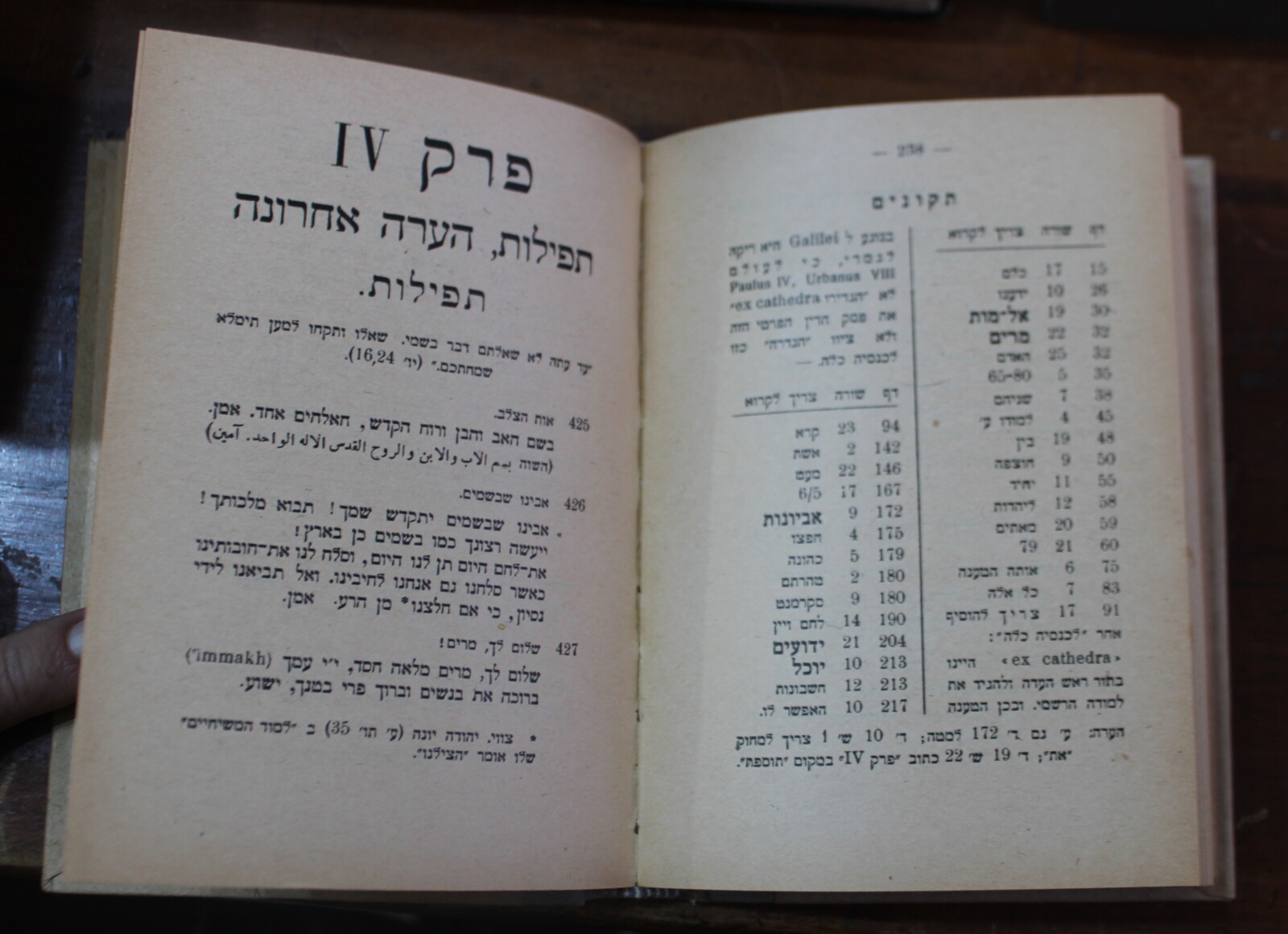
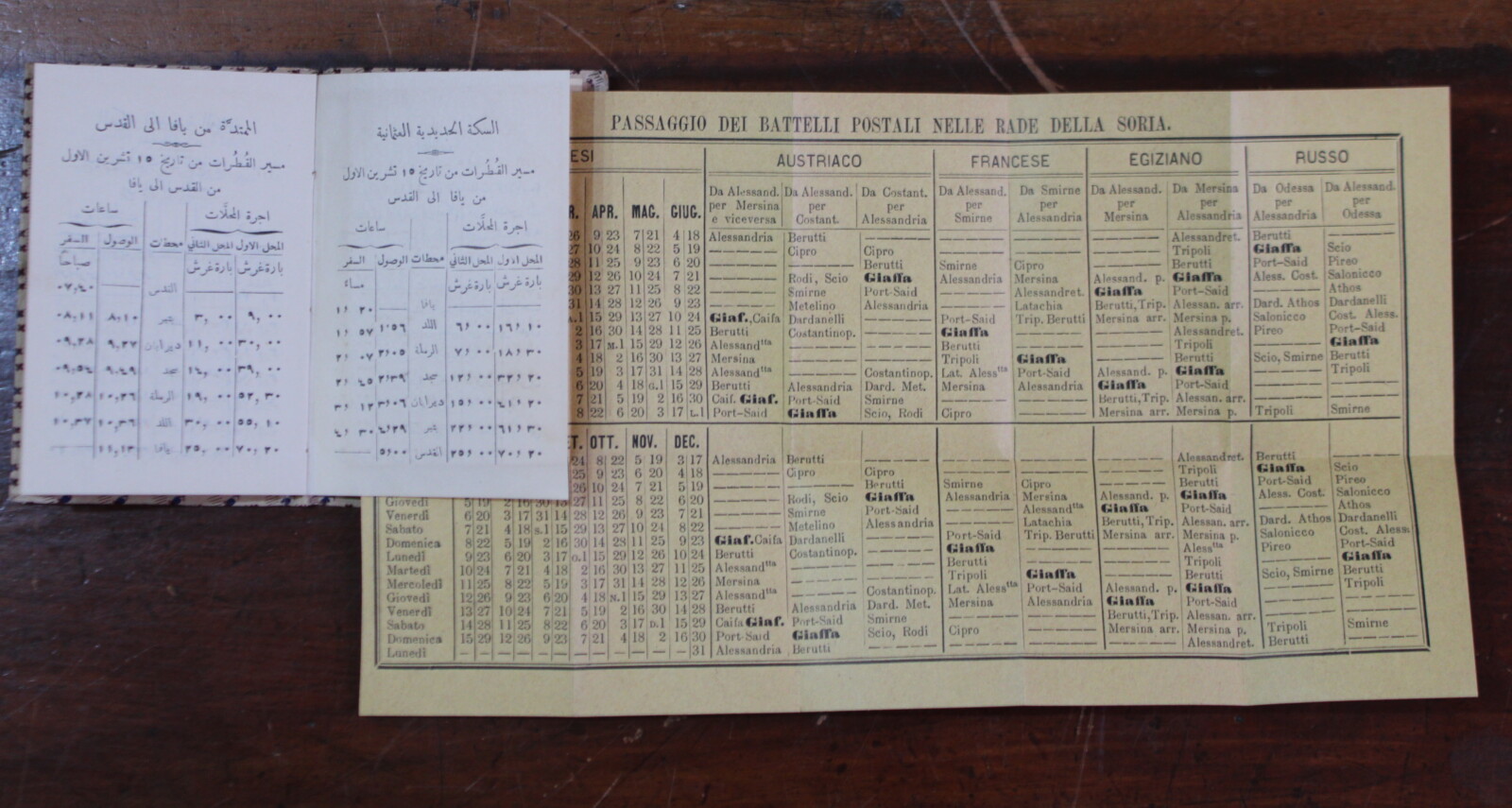
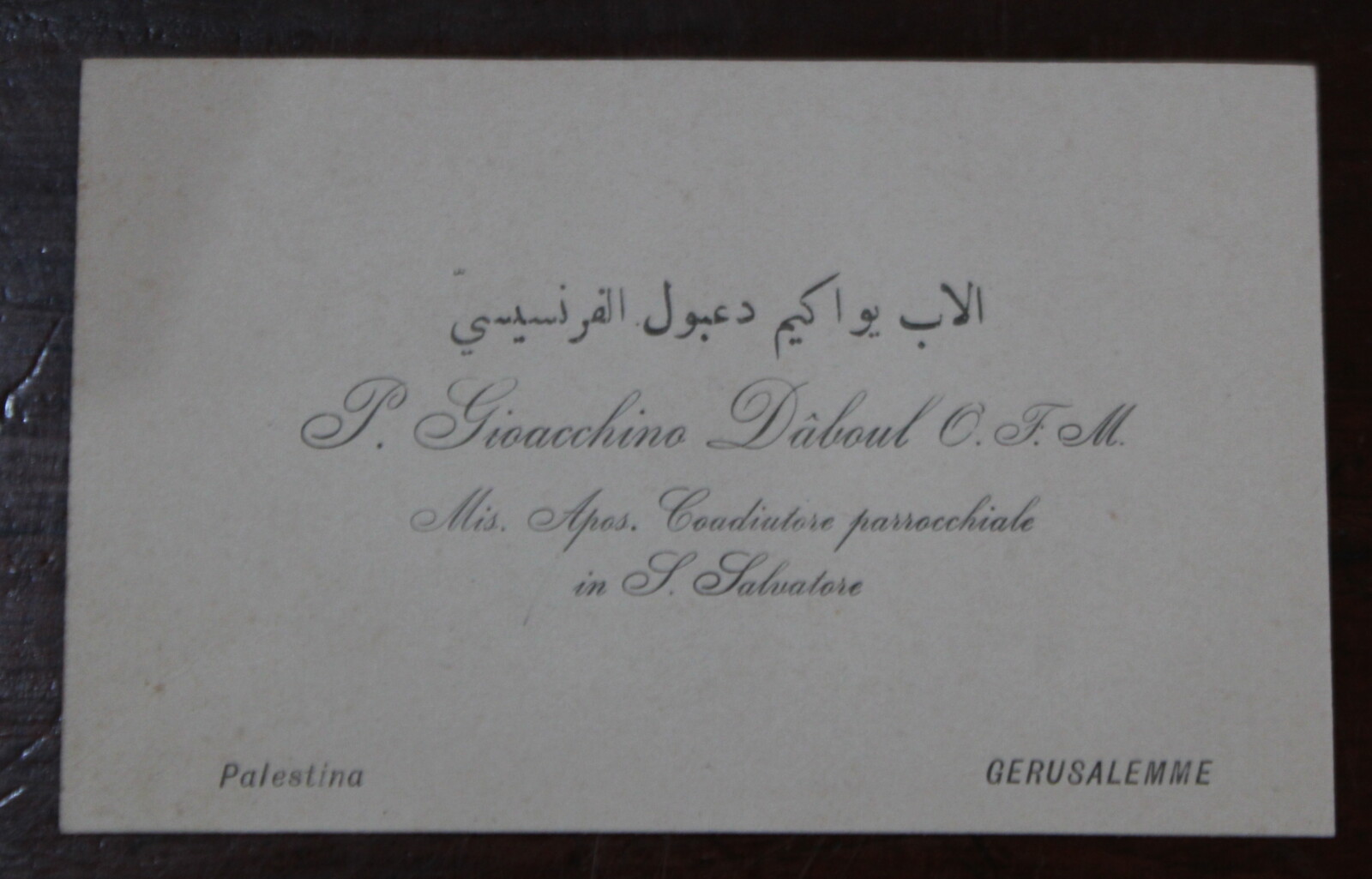
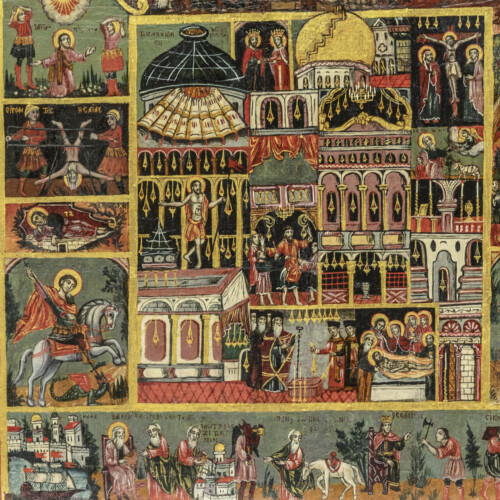
The icones
The art of the icon is an essential element of the Oriental Christian communities. The Custody owns a huge collection of icons from the Coptic, Greek and Russian schools, but also from the Arab school. As an example, this large icon almost two metres long! Made up of a multitude of scenes from the New Testament, it was produced in Jerusalem in 1890.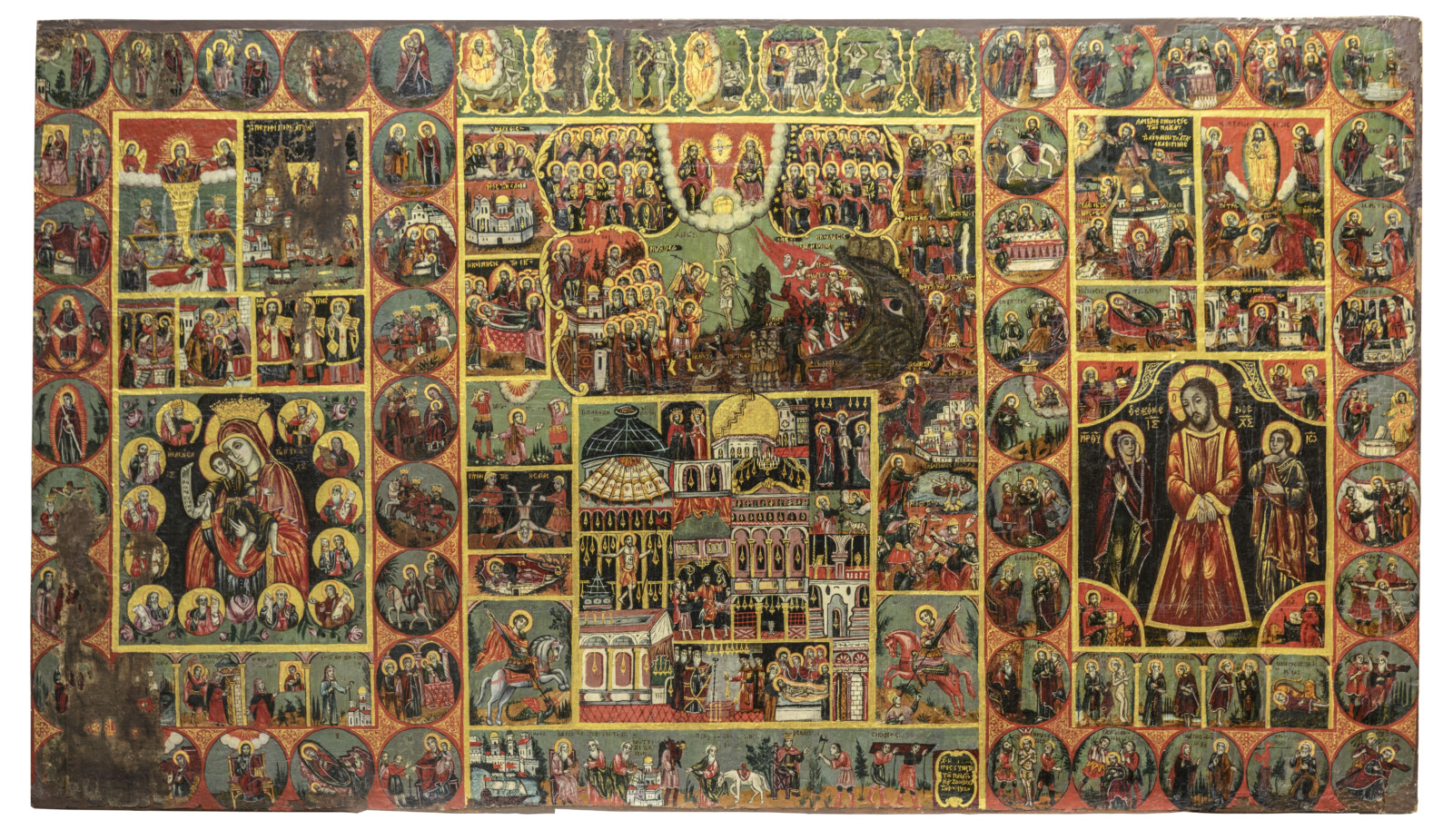
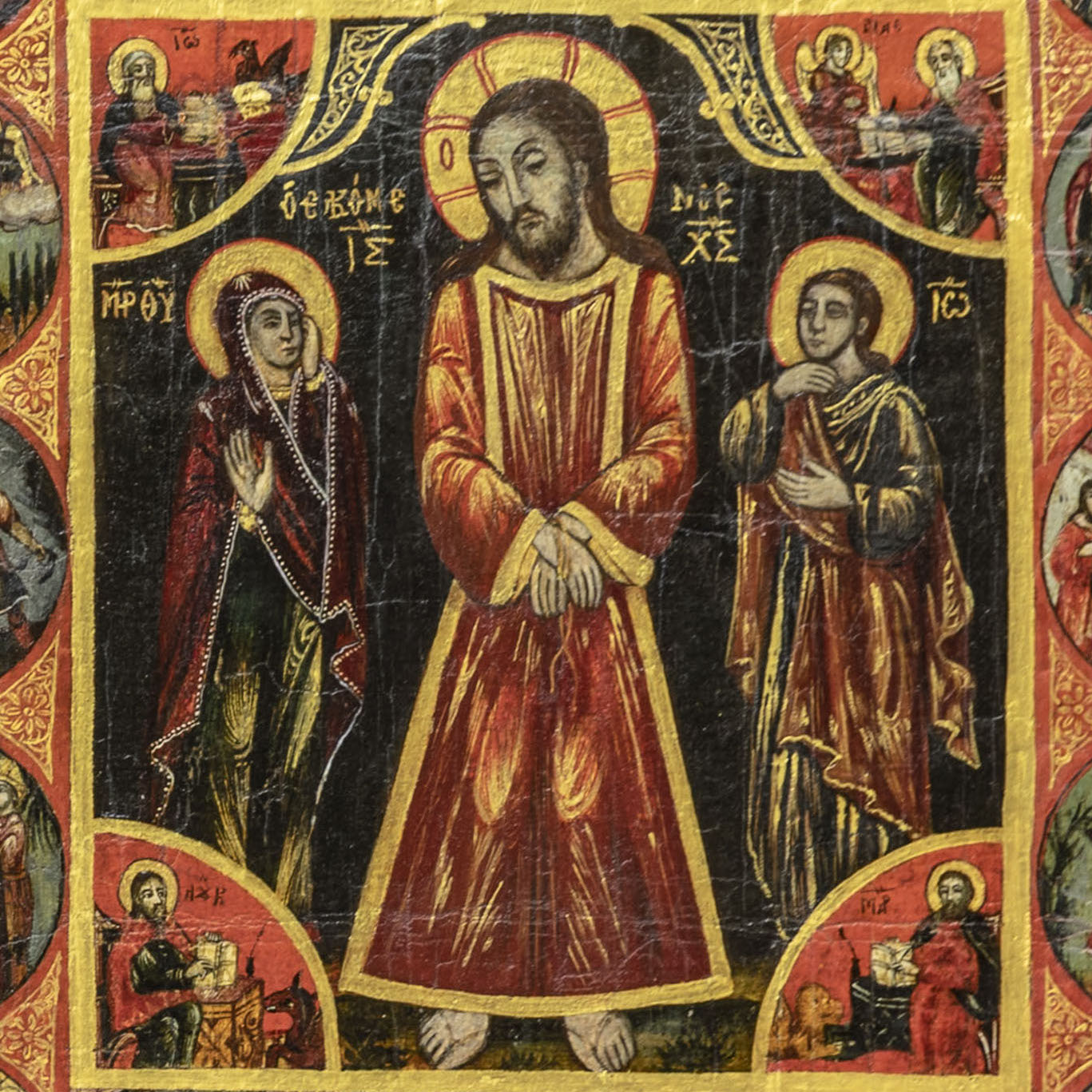
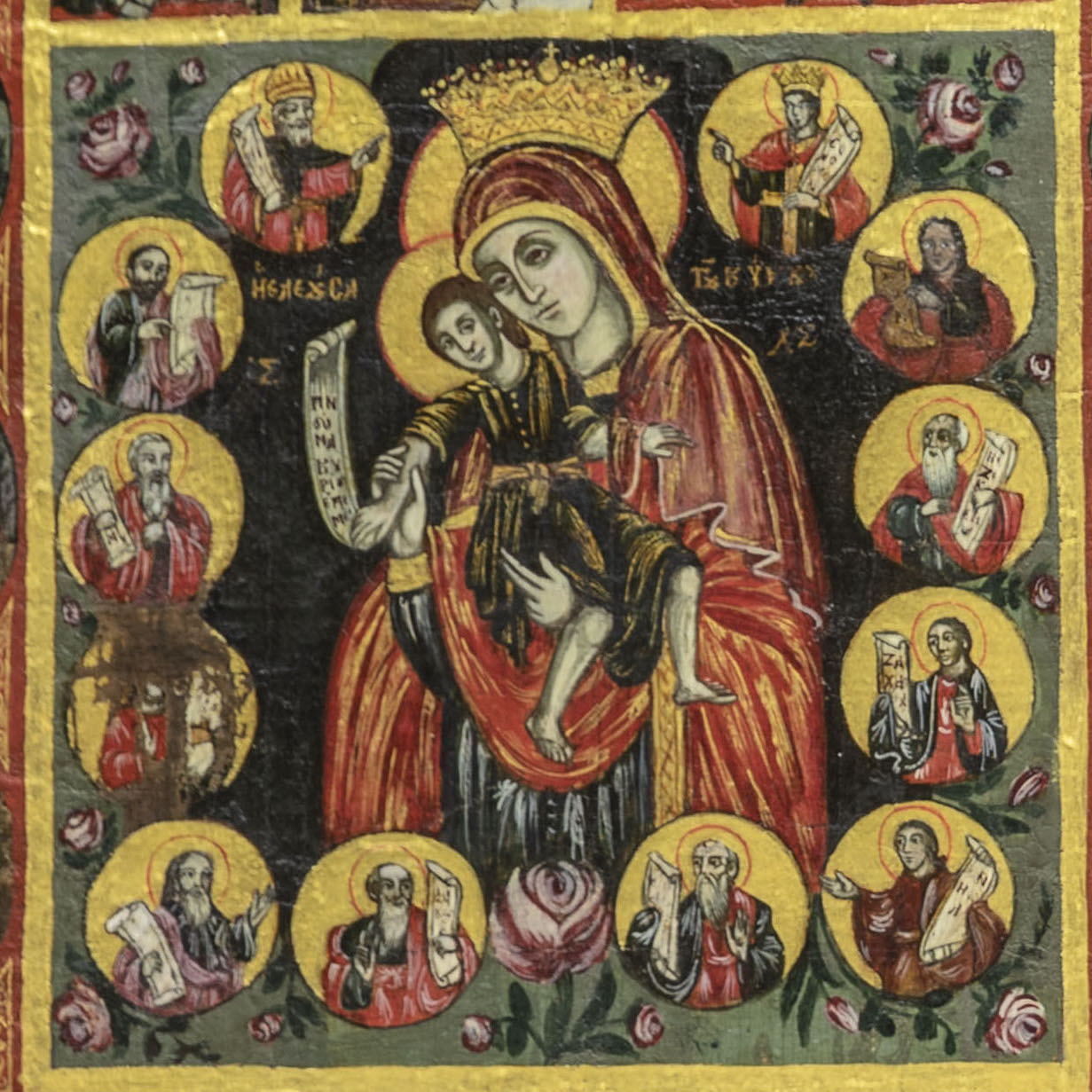
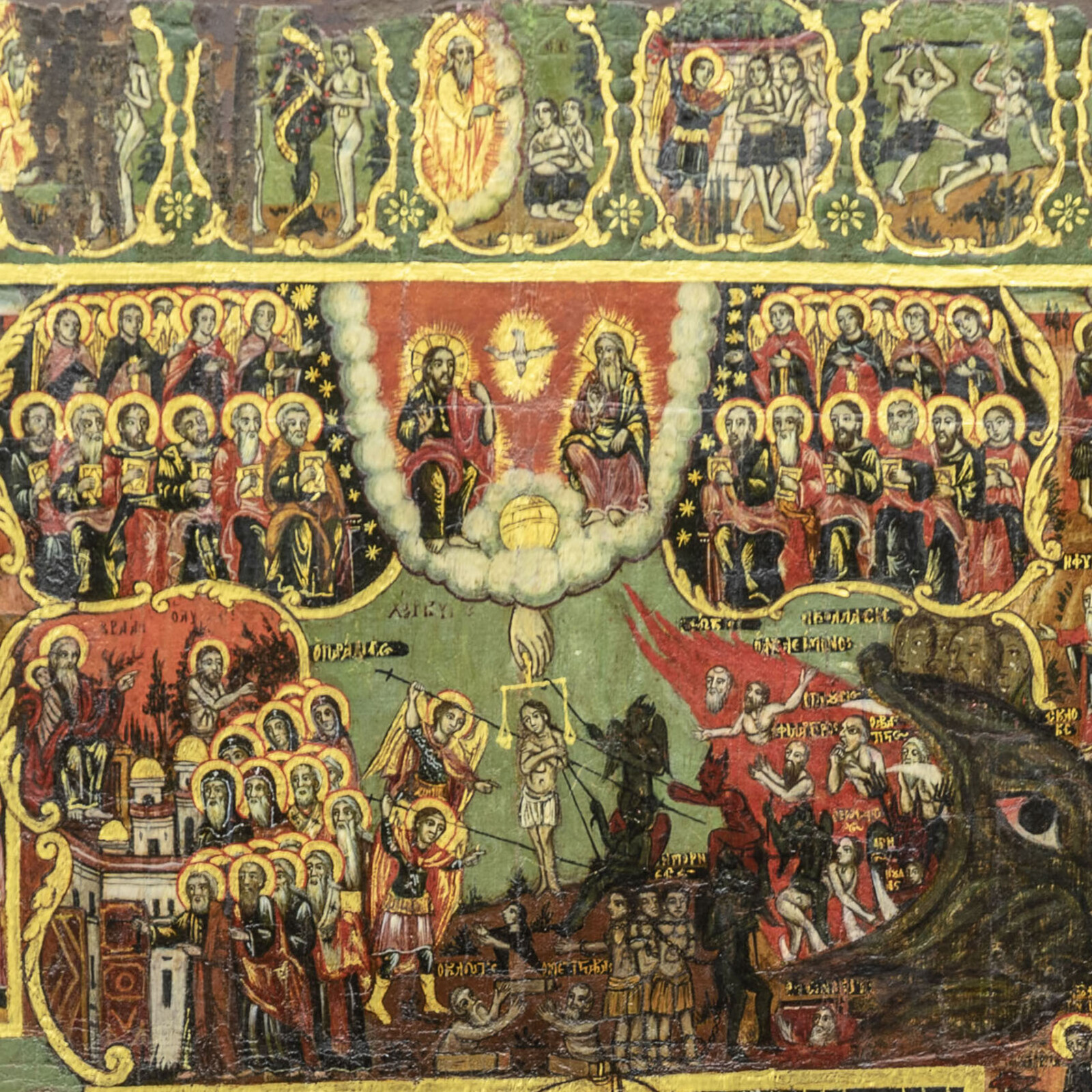
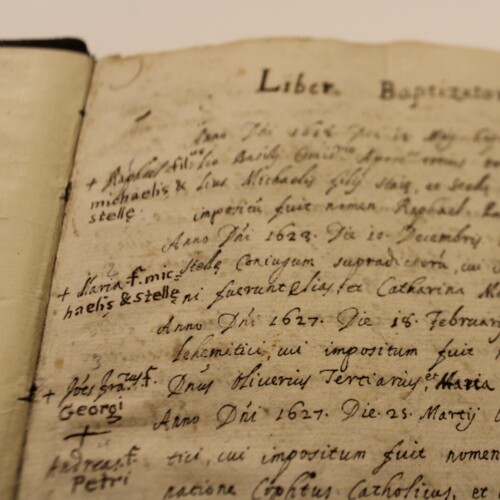
2. The registers of the sacraments
Another document attesting the rich history of the Christians in the Holy Land, the register of sacraments of Bethlehem, where baptisms in particular are recorded. Historical evidence of parish life and more generally of the life of the Christian community in Palestine, this type of register acts as a birth certificate for each of the parishioners recorded, in the view of the different political regimes which have followed on one another over the centuries. Today, these documents retain the same purpose in the Holy Land: unlike European countries for example, people’s rights still depend on the responsibility of the religious institutions.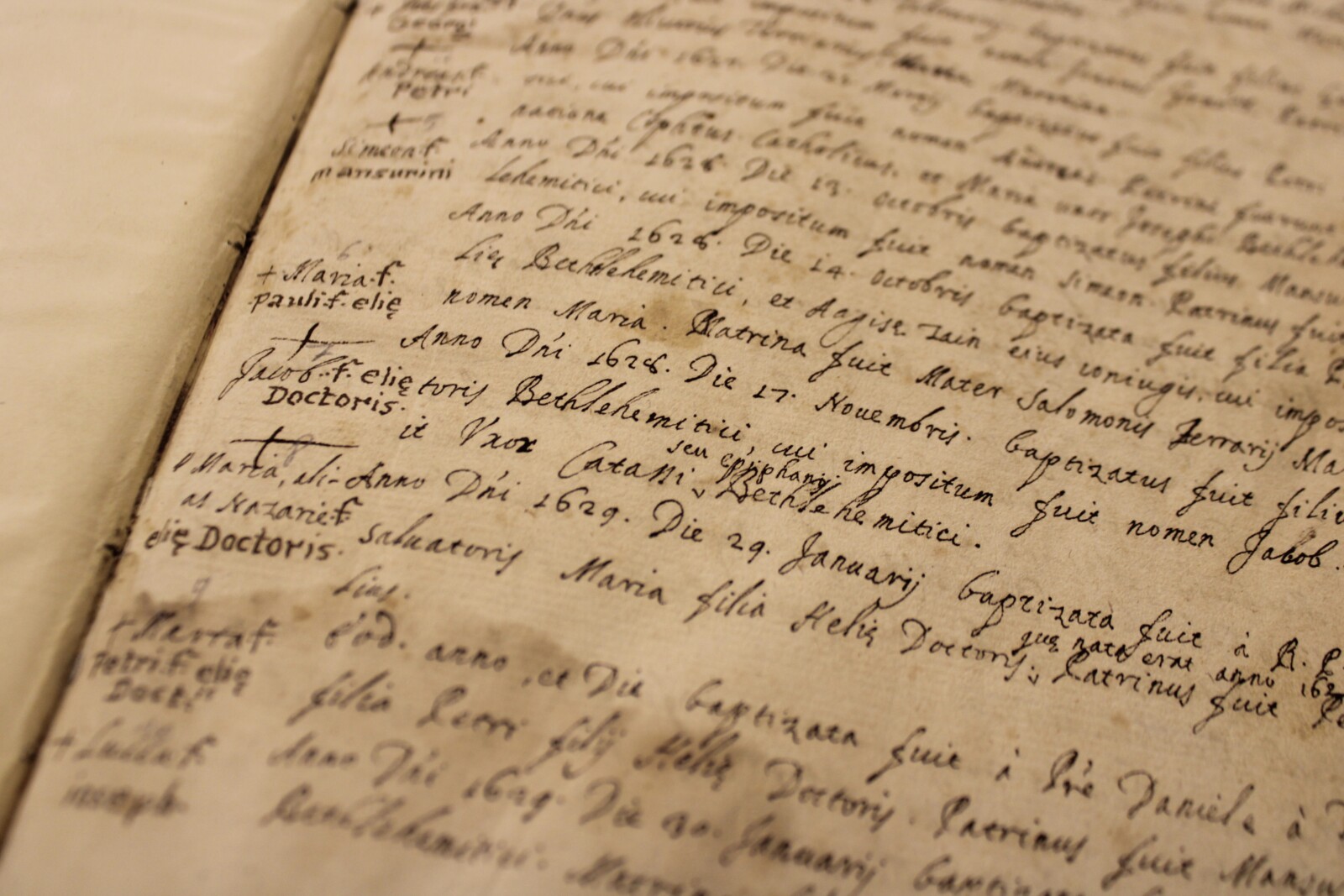
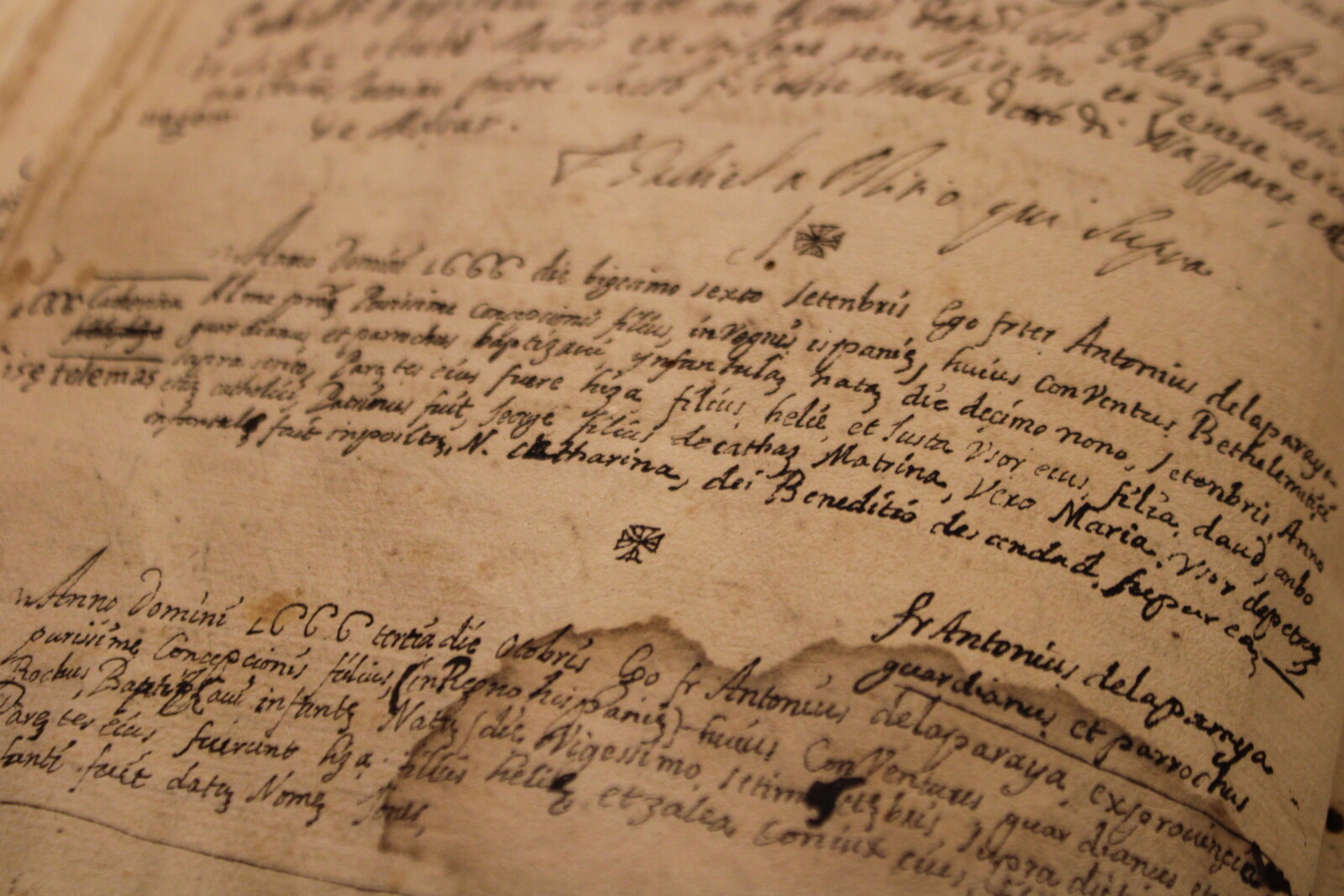
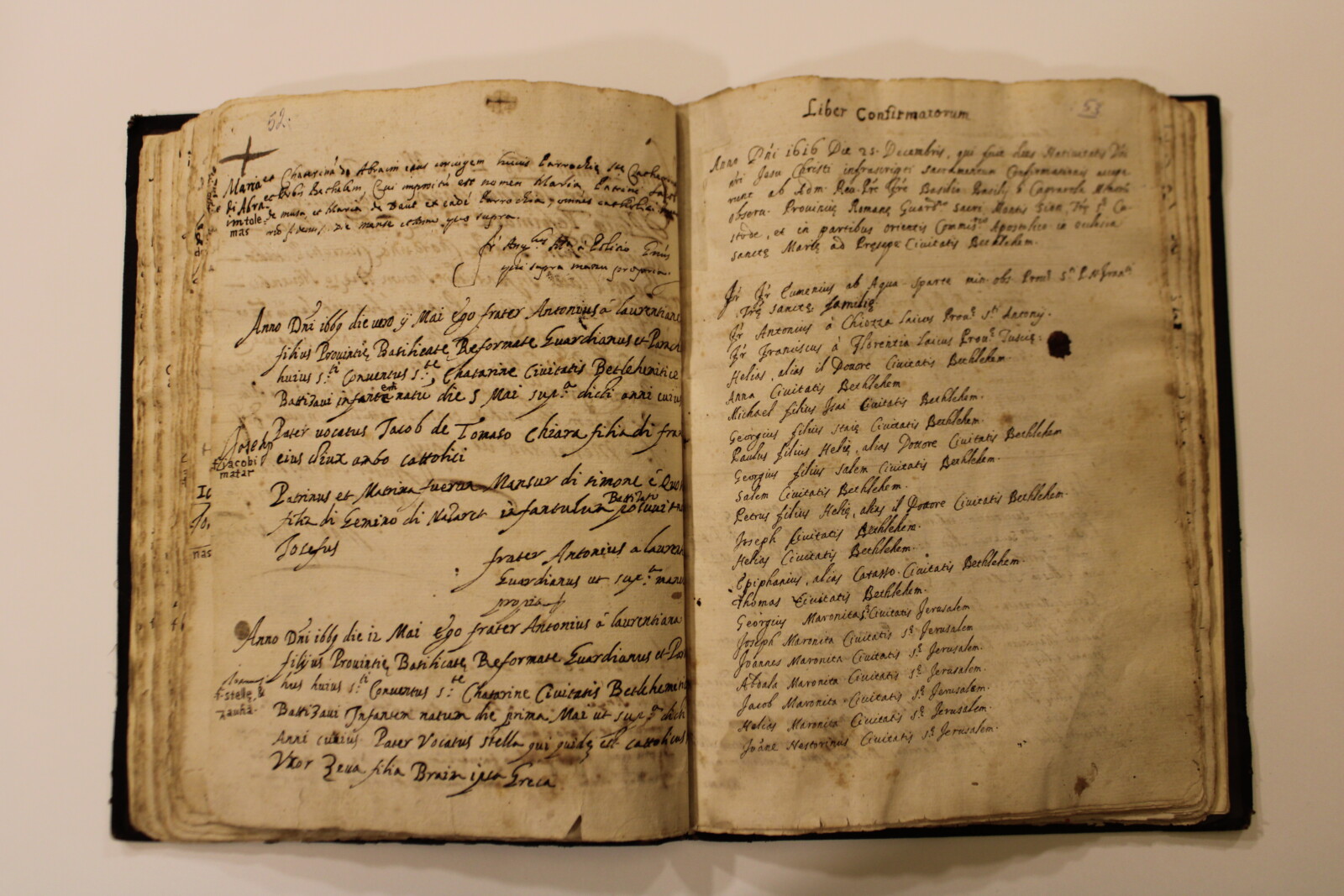
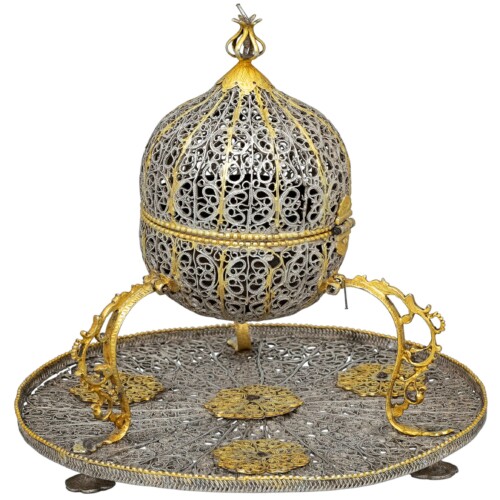
Gold- and silversmithery
Since the Middle Ages the countries of the Middle East have excelled in the art of metalworking, for example through the Syrian metalworkers of the 13th century. This art of metal working has continued up to today and the collections of the Franciscans of the Holy Land include major pieces with filigree decorations from the 17th century. The museum will also be showing an oval perfume-burner resting on three rounded feet with a baroque decoration of foliage and its support, a large round tray with three feet. The shape of this set continues a model that was current in the Ottoman Empire. An aspersorium, also in silver with a filigree decoration, is particularly interesting in the style of its decoration. It was perhaps made by Armenian silversmiths working in Egypt during the Ottoman domination. This aspersorium is still used by the Franciscans on Good Friday in the Holy Sepulchre.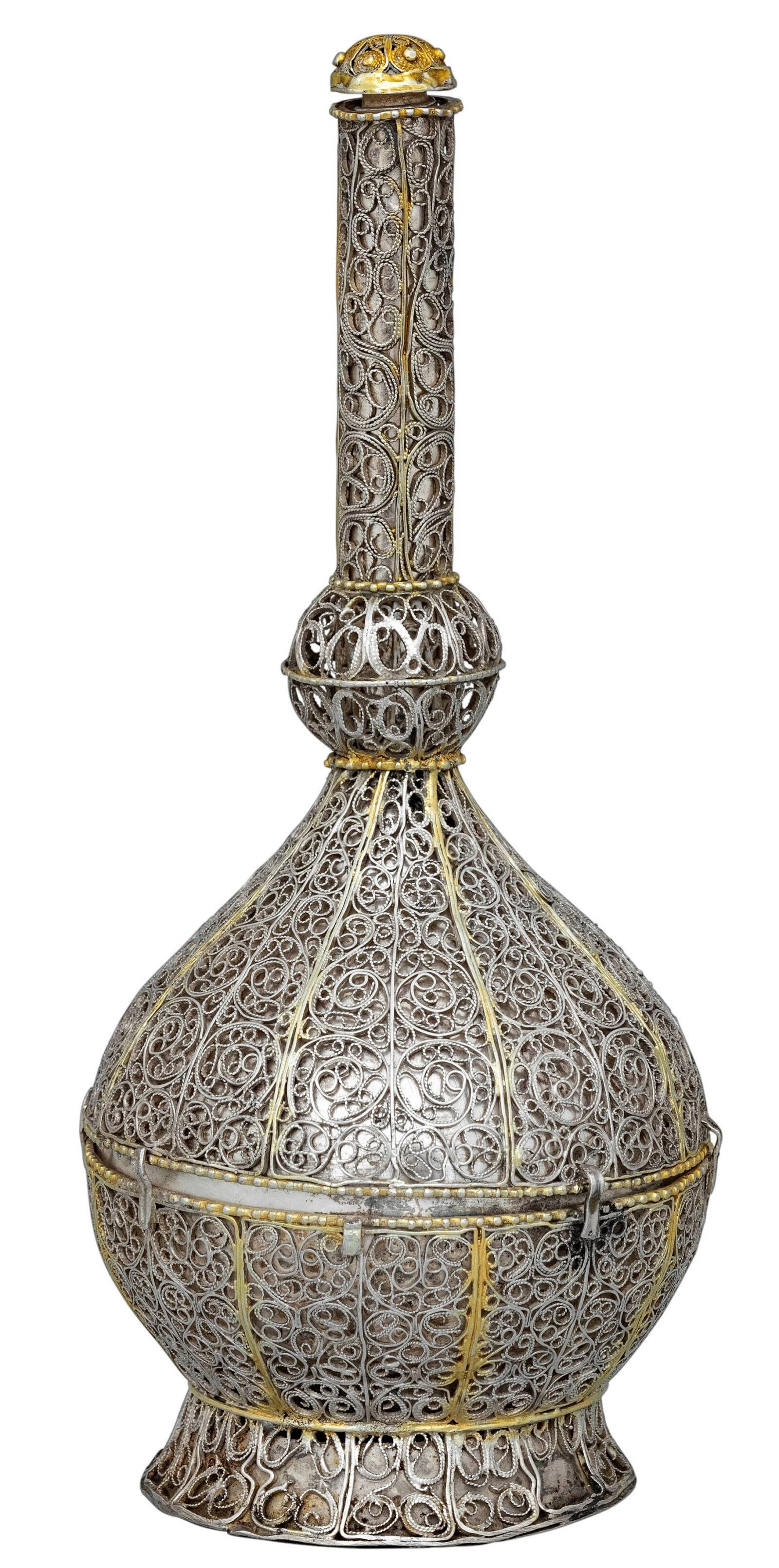
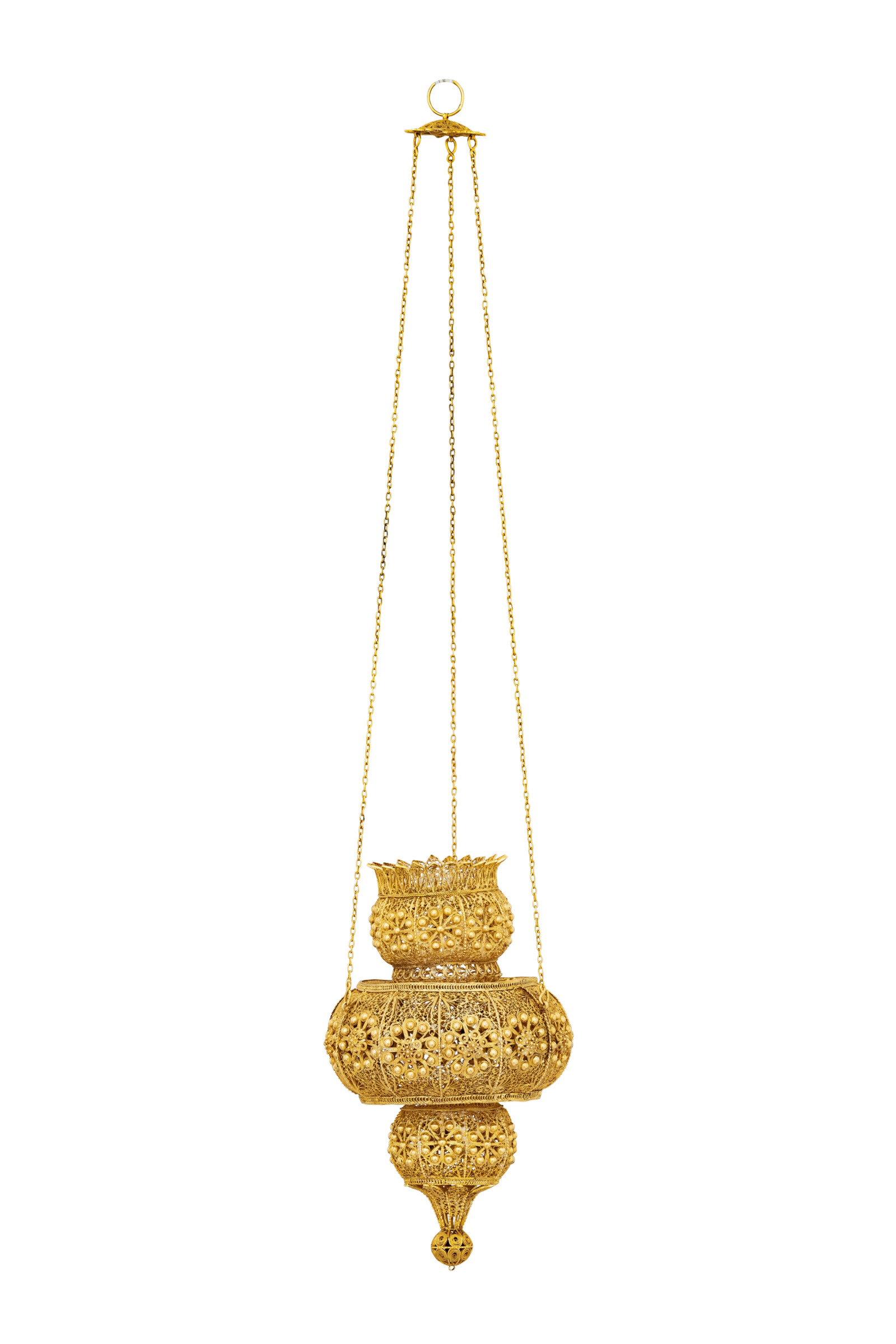
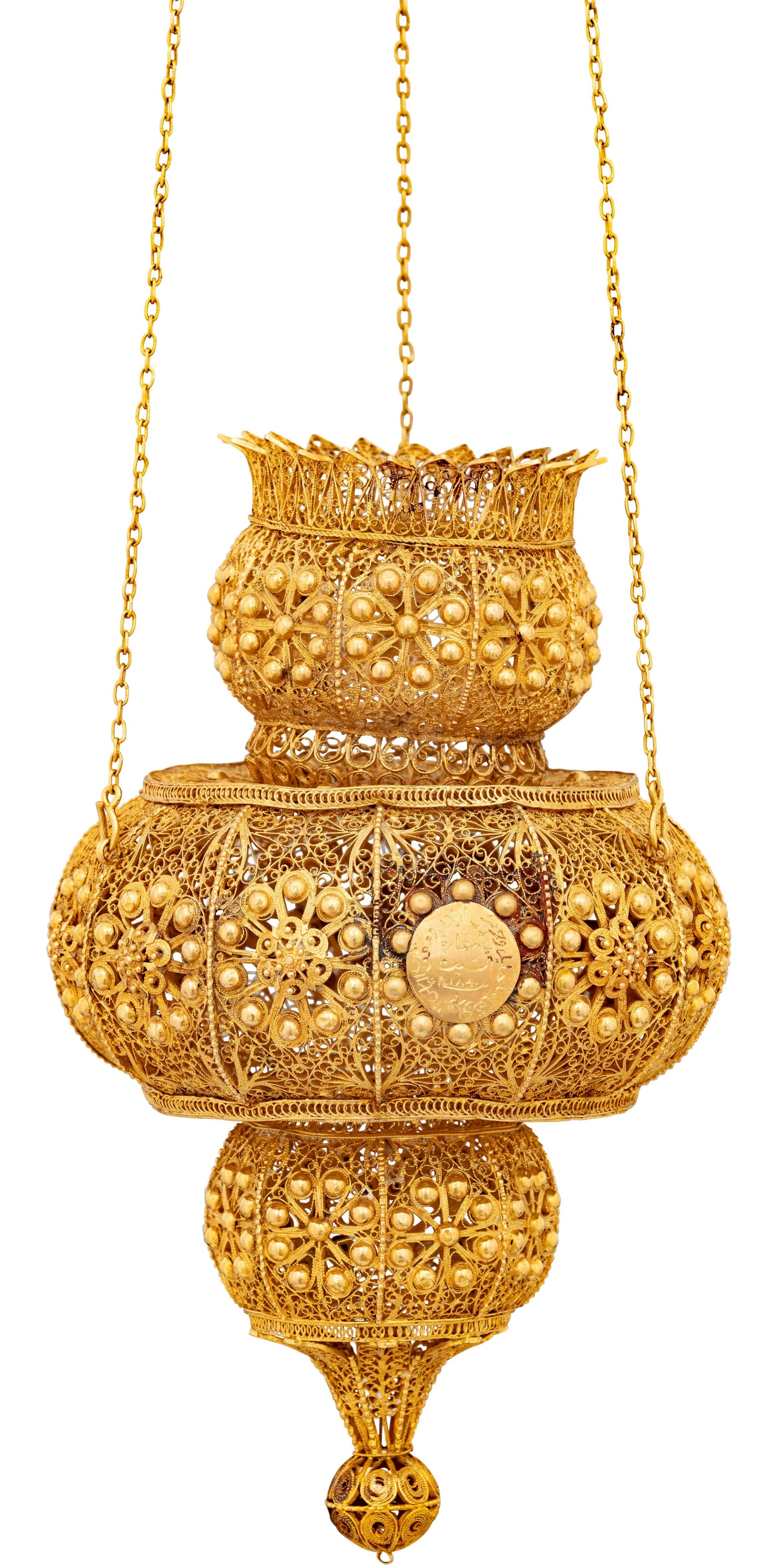
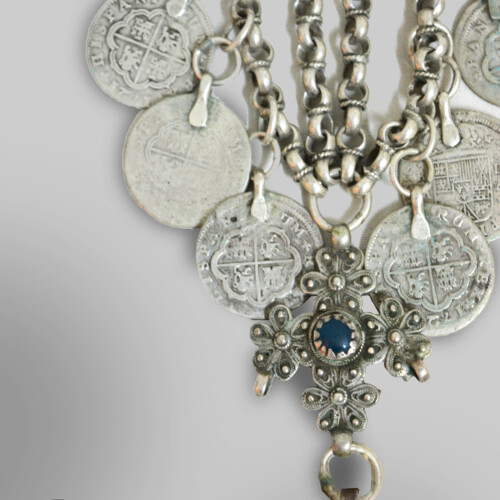
Palestinian headdresses and jewellery
Lastly, the museum has also recently acquired a rare collection of Palestinian headdresses and jewellery, in particular used for weddings. This type of headdress, in particular, was offered to the bride on her wedding day by the sheikh. Made by Christian women of Bethlehem, they were then worn mainly by Muslim women in Hebron. From four to five kilos of silver could be required to make them. Today only twelve specimens are held in museum collections around the world, one of which in the Terra Sancta Museum.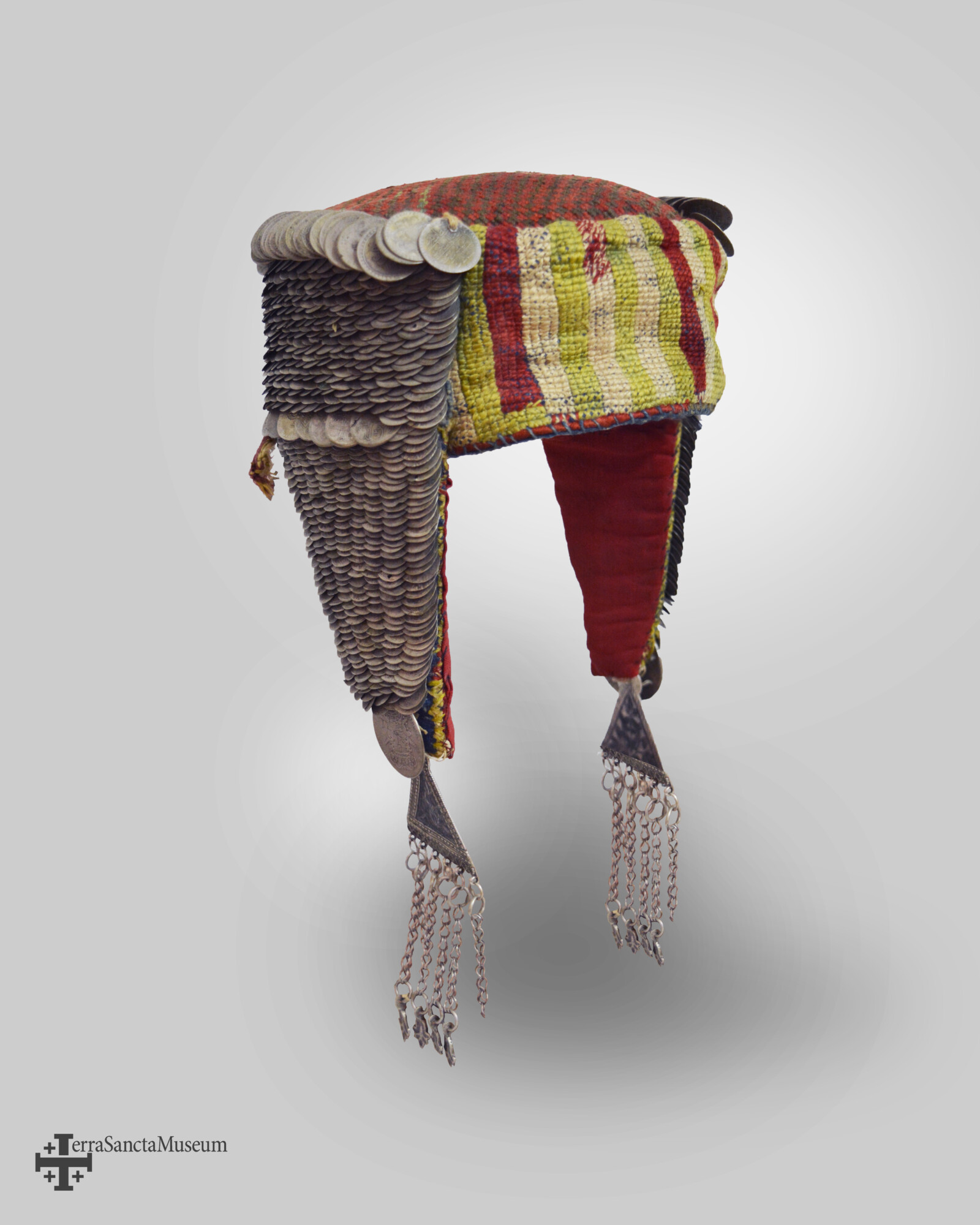
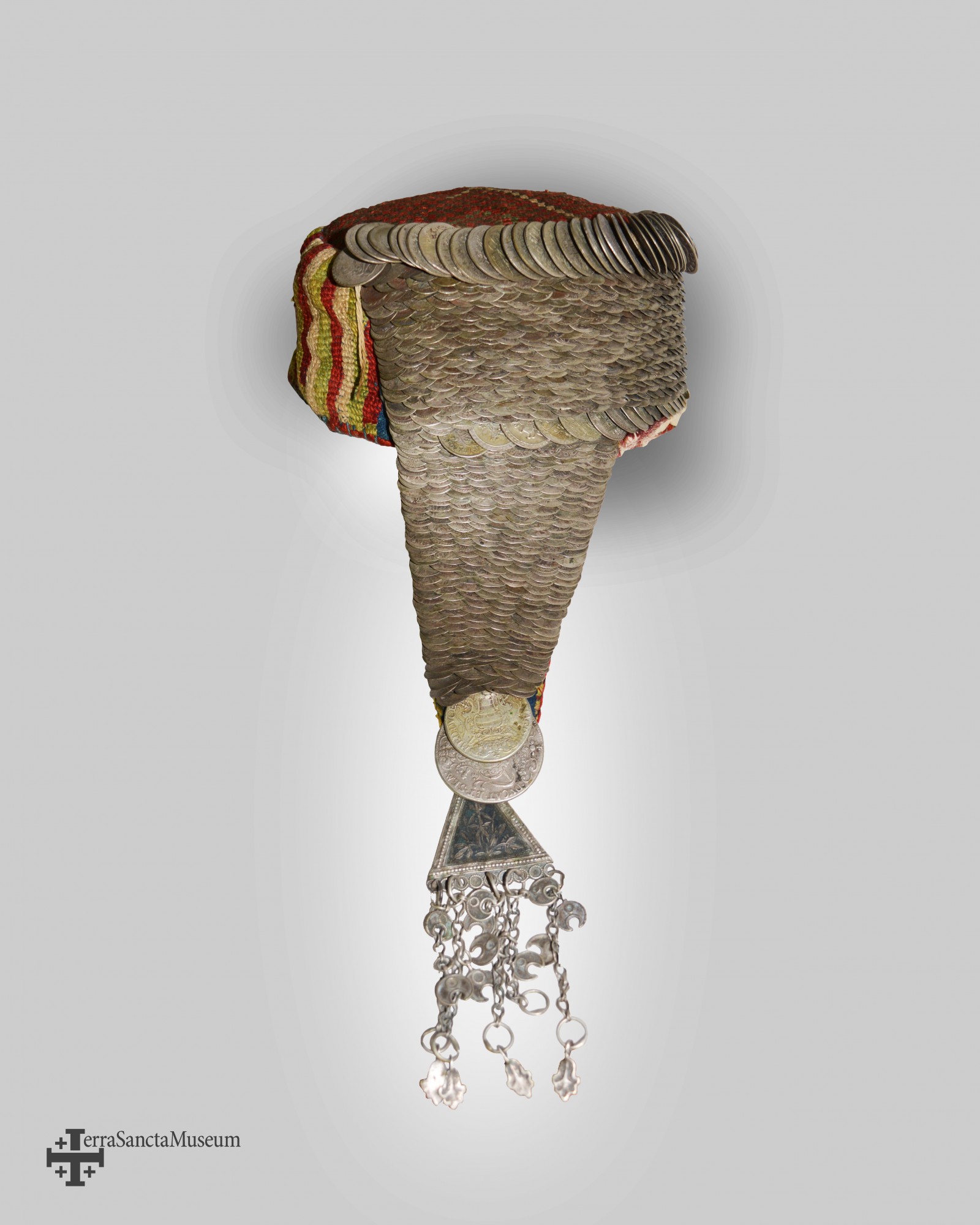
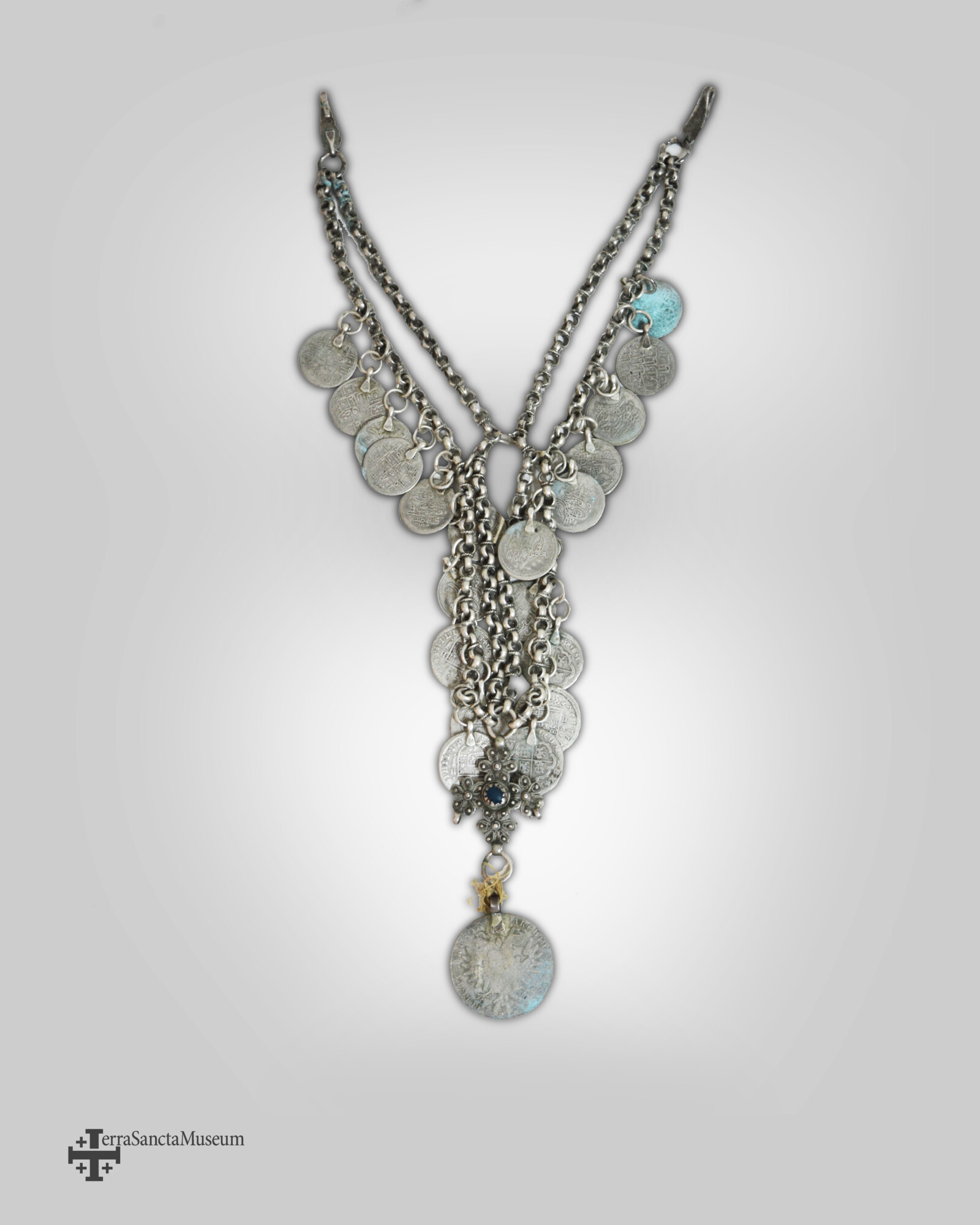
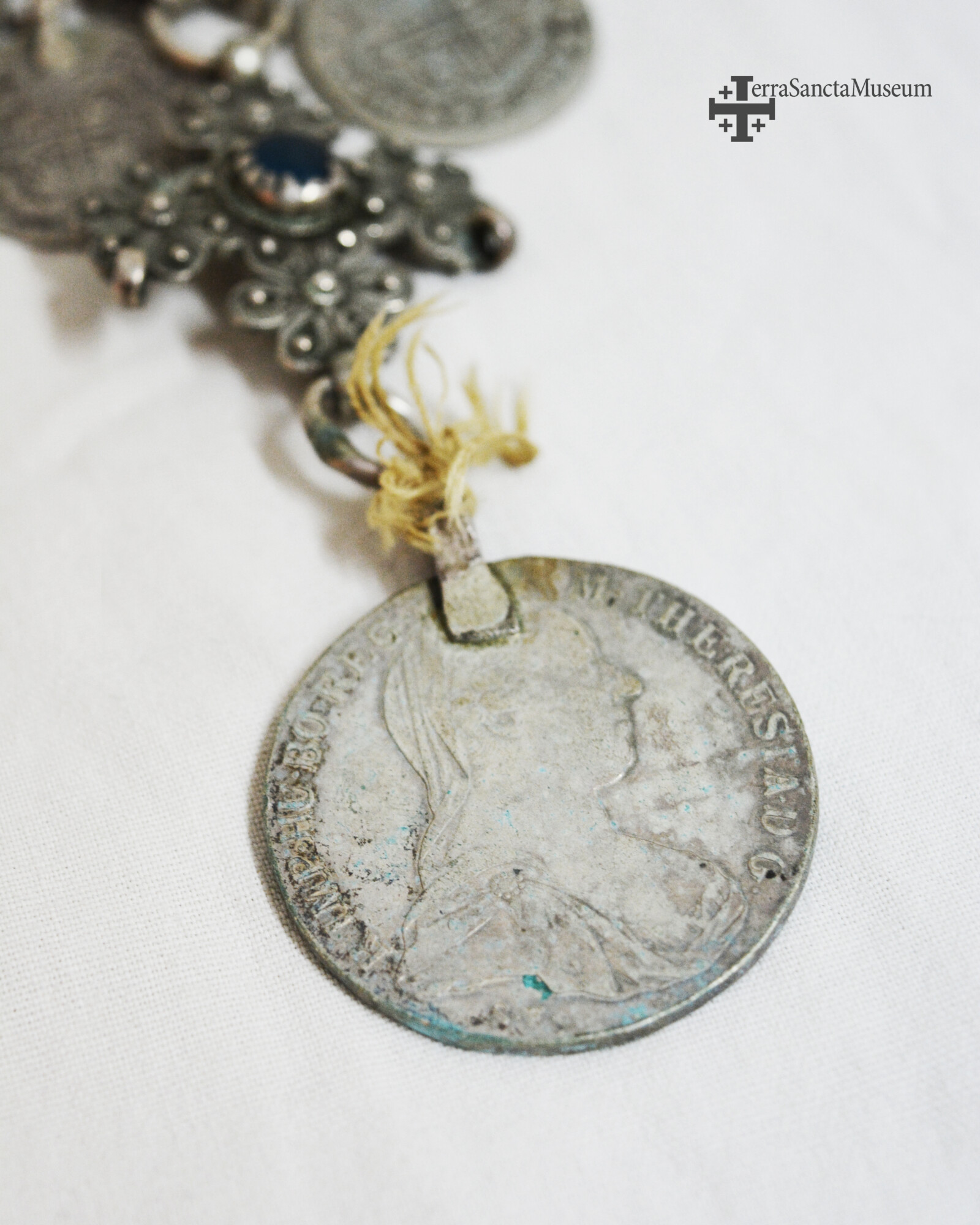
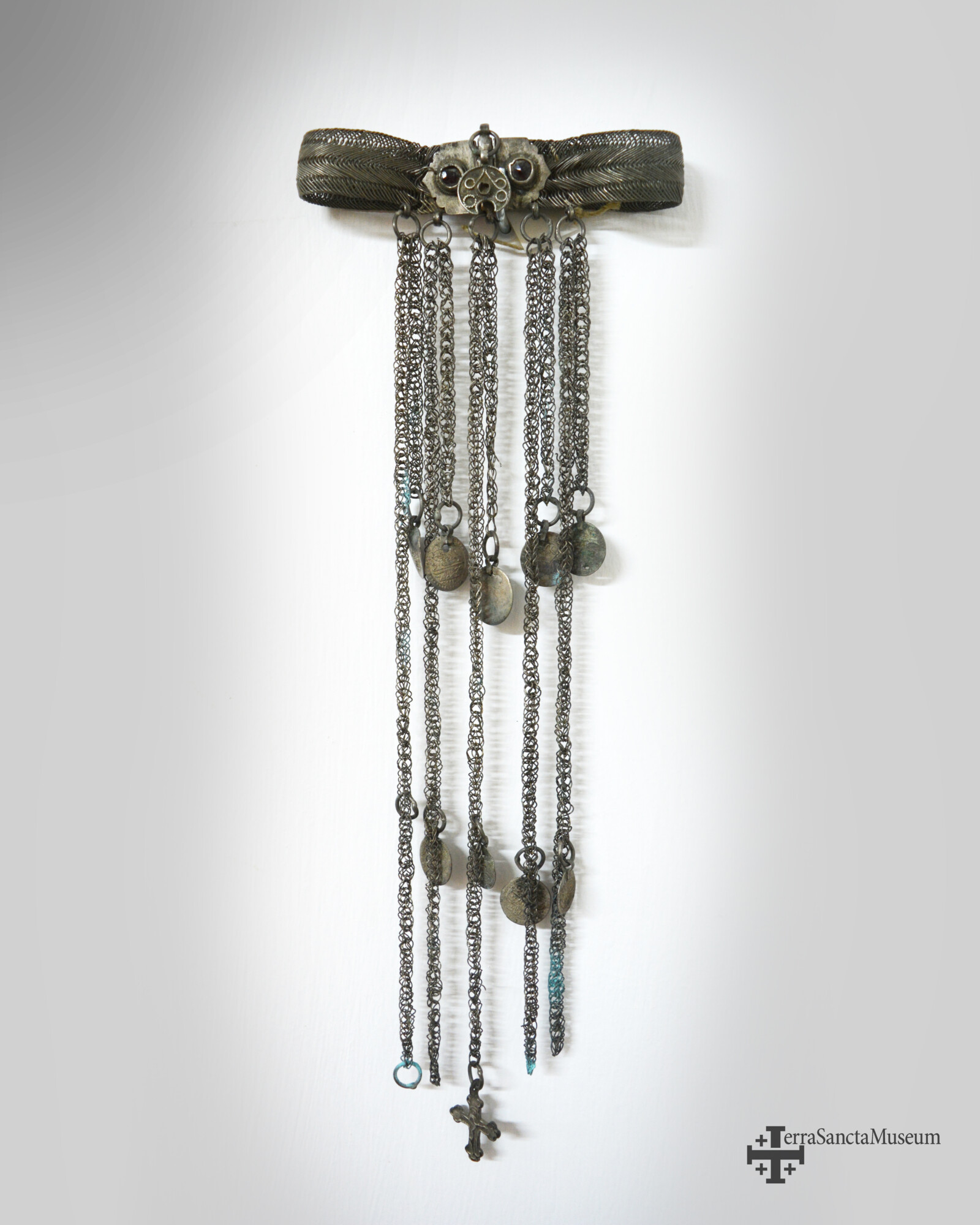
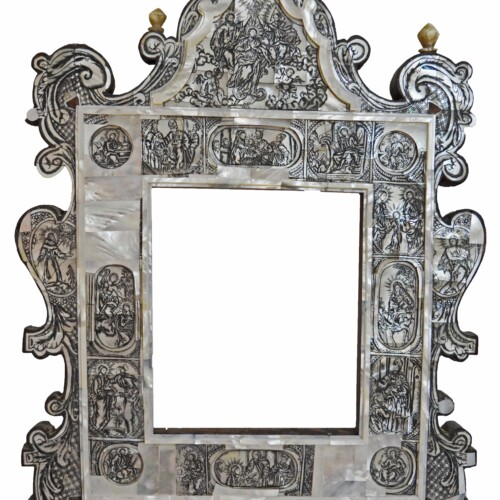
Mother-of-pearl
Working mother-of-pearl was introduced by the Franciscans at the end of the 16th century, in particular in Bethlehem. This craft allowed giving work to the many Christians of the Holy Land and develop a major trade in the Holy Places. Reliquaries, models, small items of furniture and pilgrimage souvenirs are still made today and recognized as genuine masterpieces by the refinement of their crafting. This model of the Holy Sepulchre (in olive wood, mother-of-pearl. Ivory and ebony) was made in a Franciscan convent in Jerusalem of Bethlehem. It shows how the building appeared before the fire in 1808. A similar piece is also in the Chateau of Versailles in France, proof of the success and renown of this type of piece in the 17th century.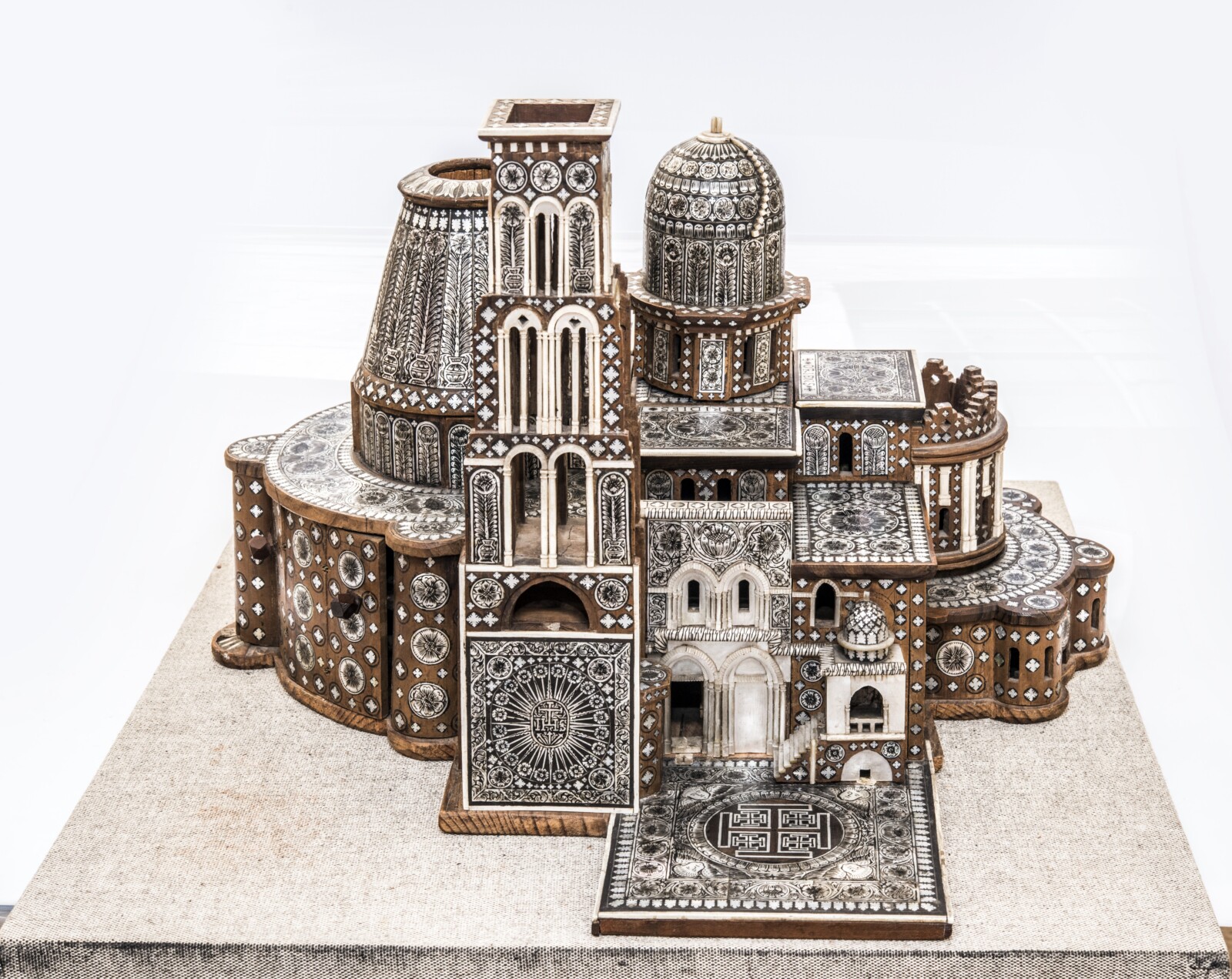
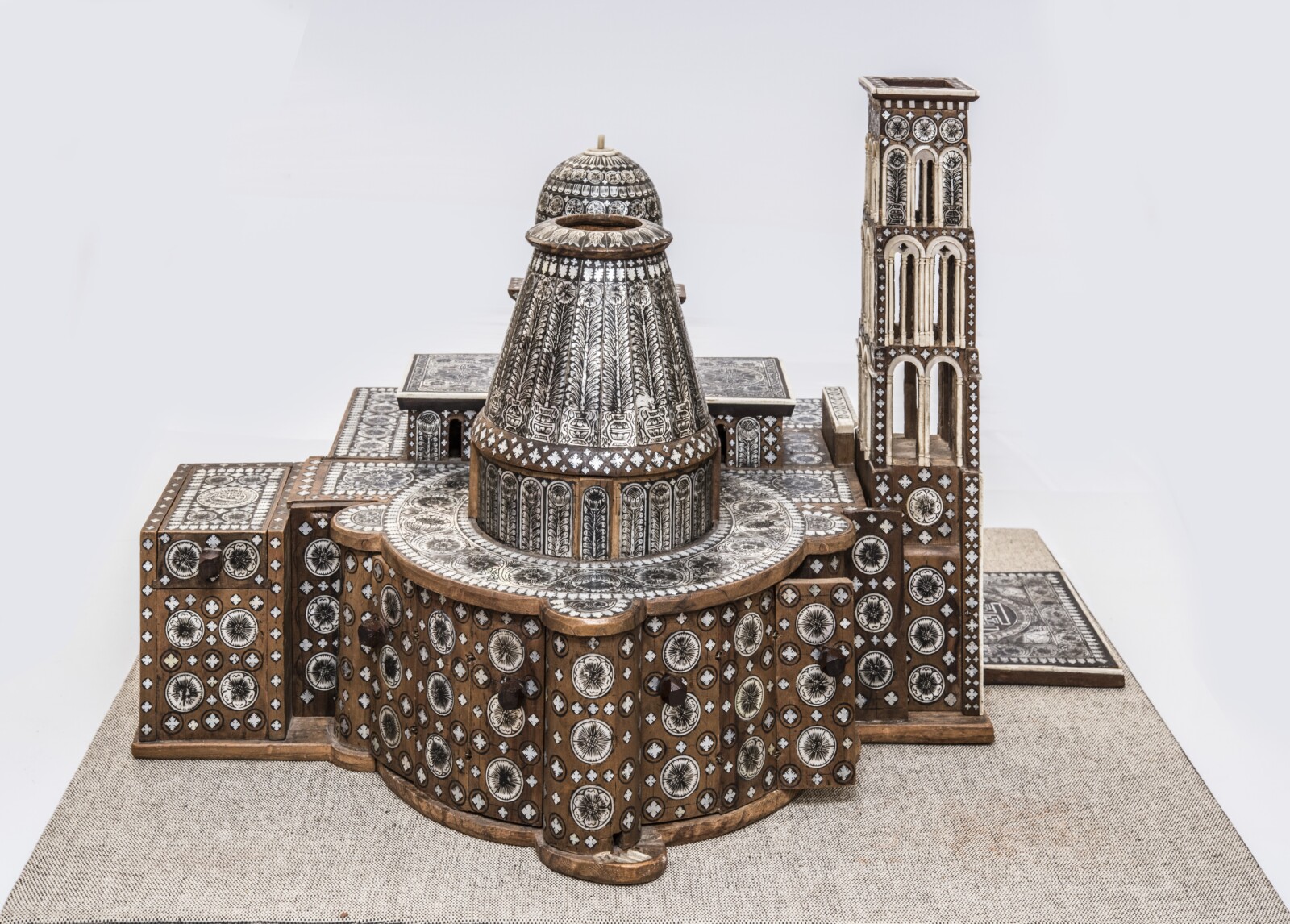
This reliquary in olive wood and mother-of-pearl (16th century) is one of the oldest pieces in our collection, It has a decoration of rosettes and small crosses. The motif of the “Franciscan Conformities”, the emblem of the Orders of Friars Minor, can be seen on its base.
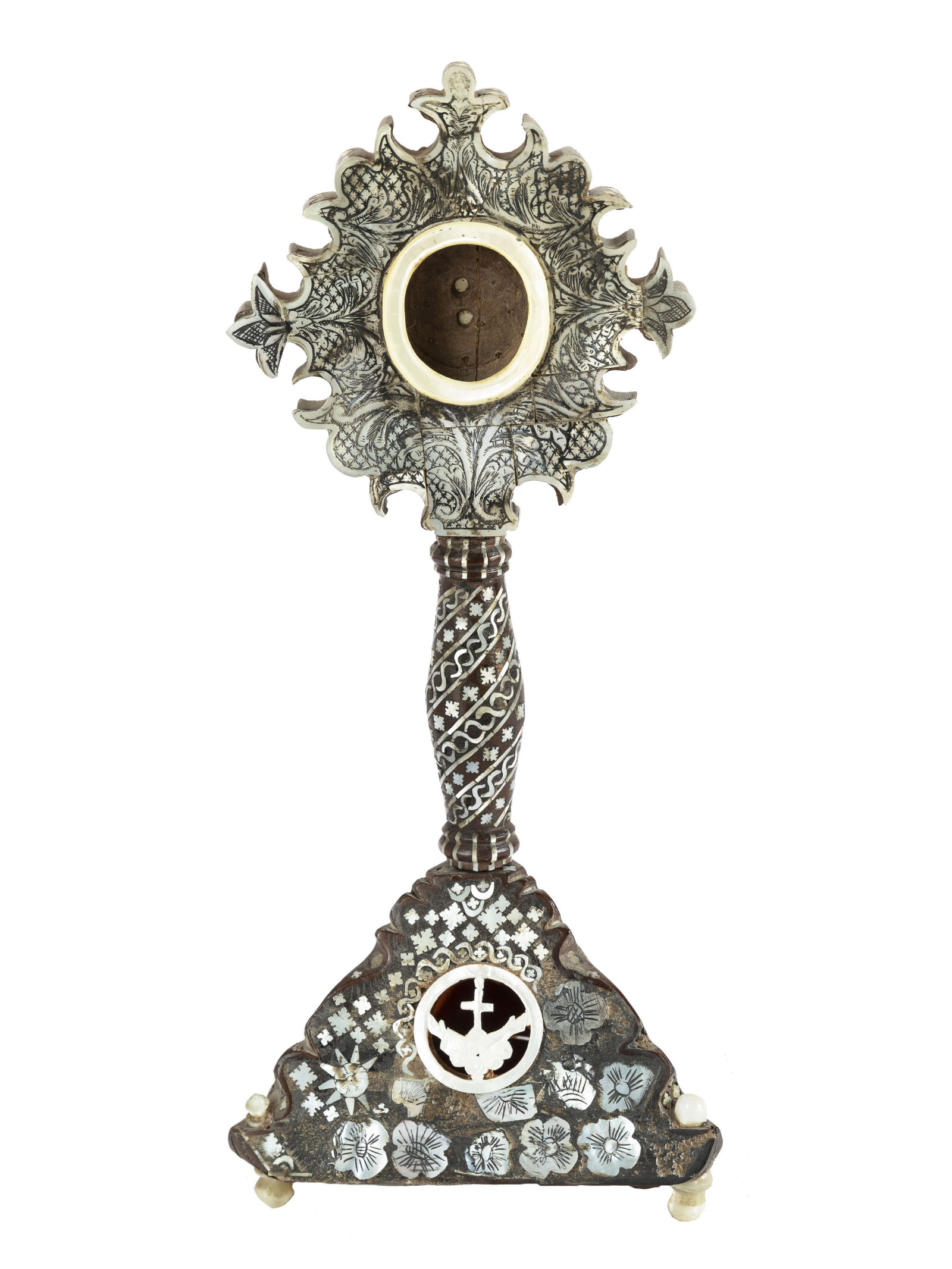
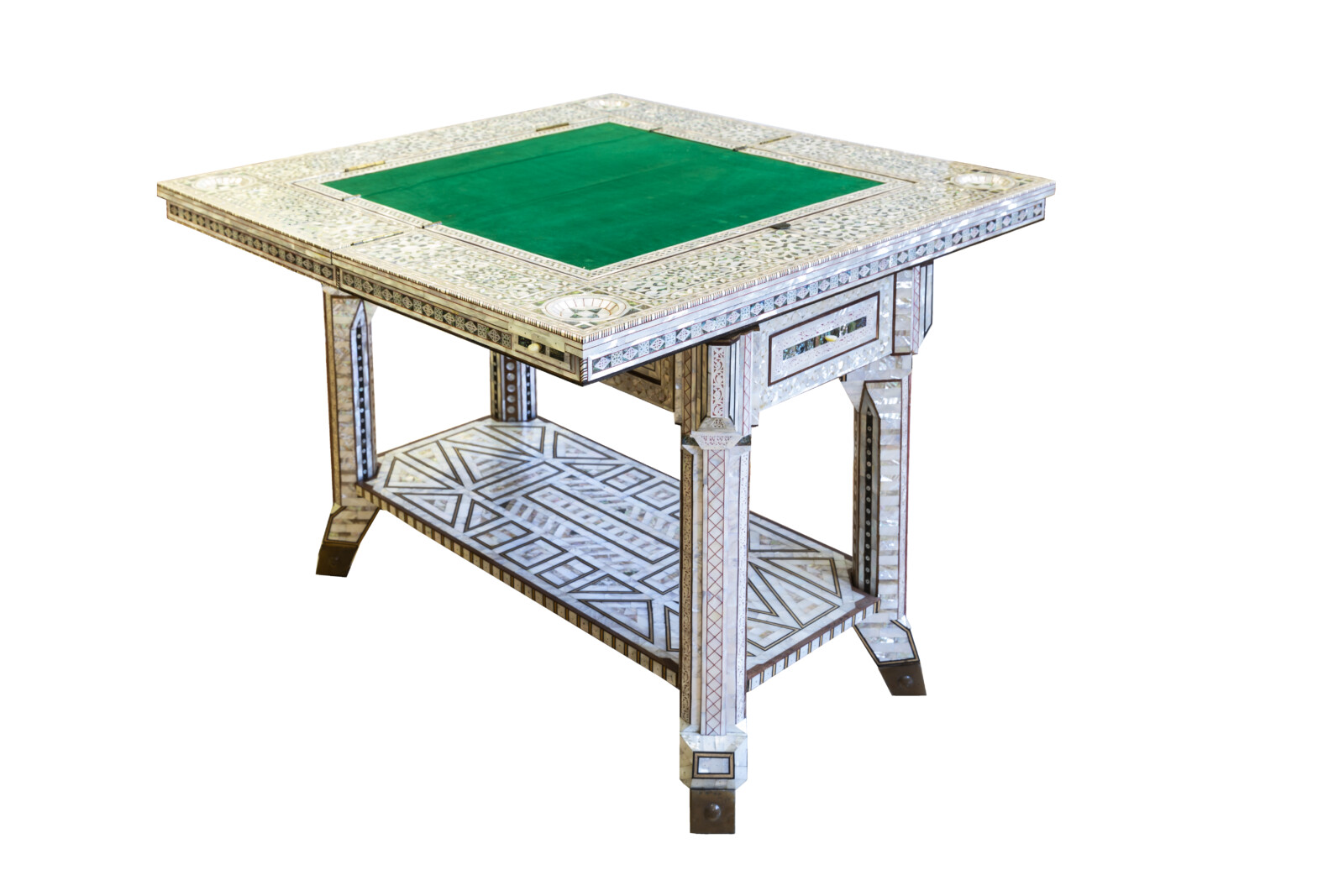
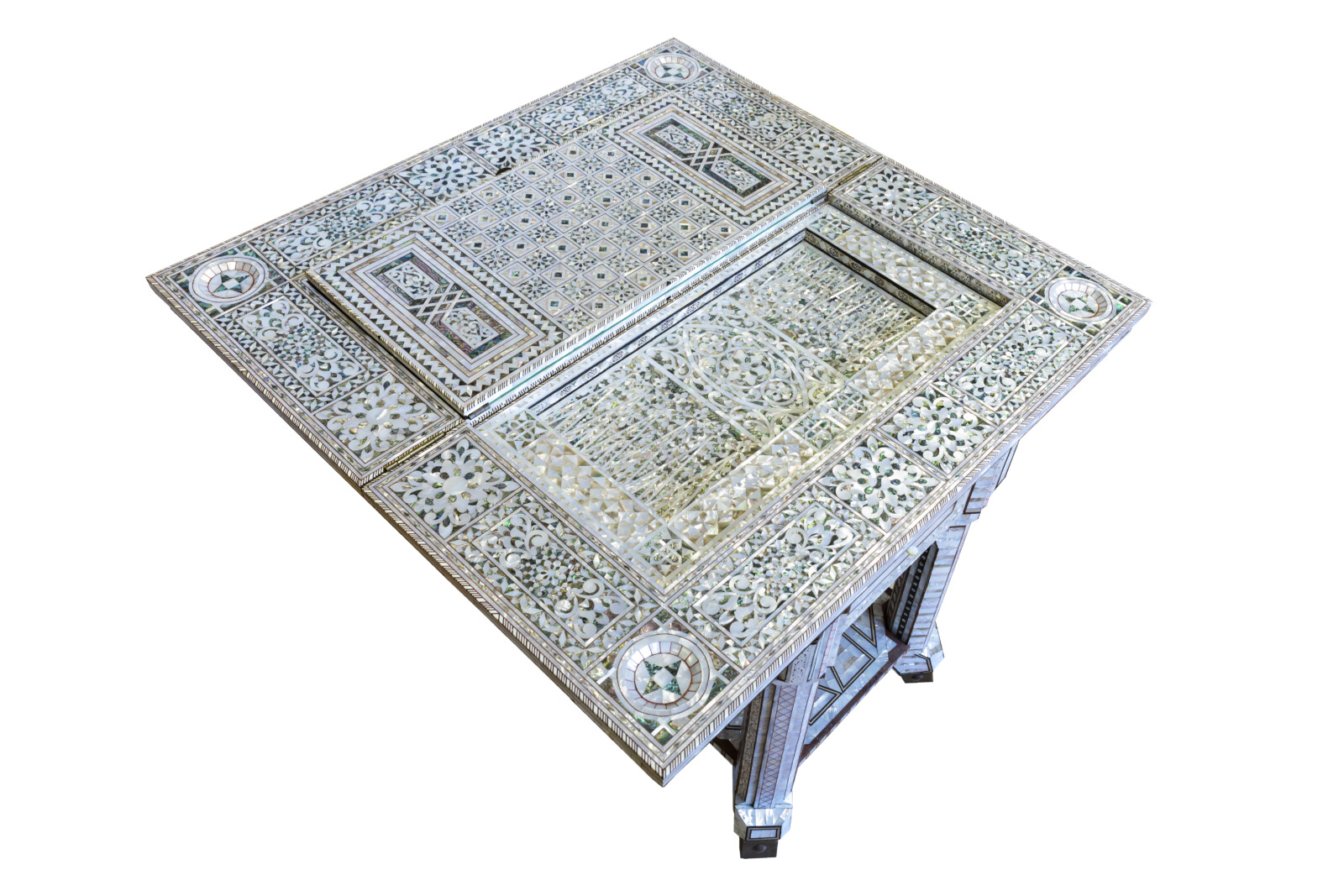
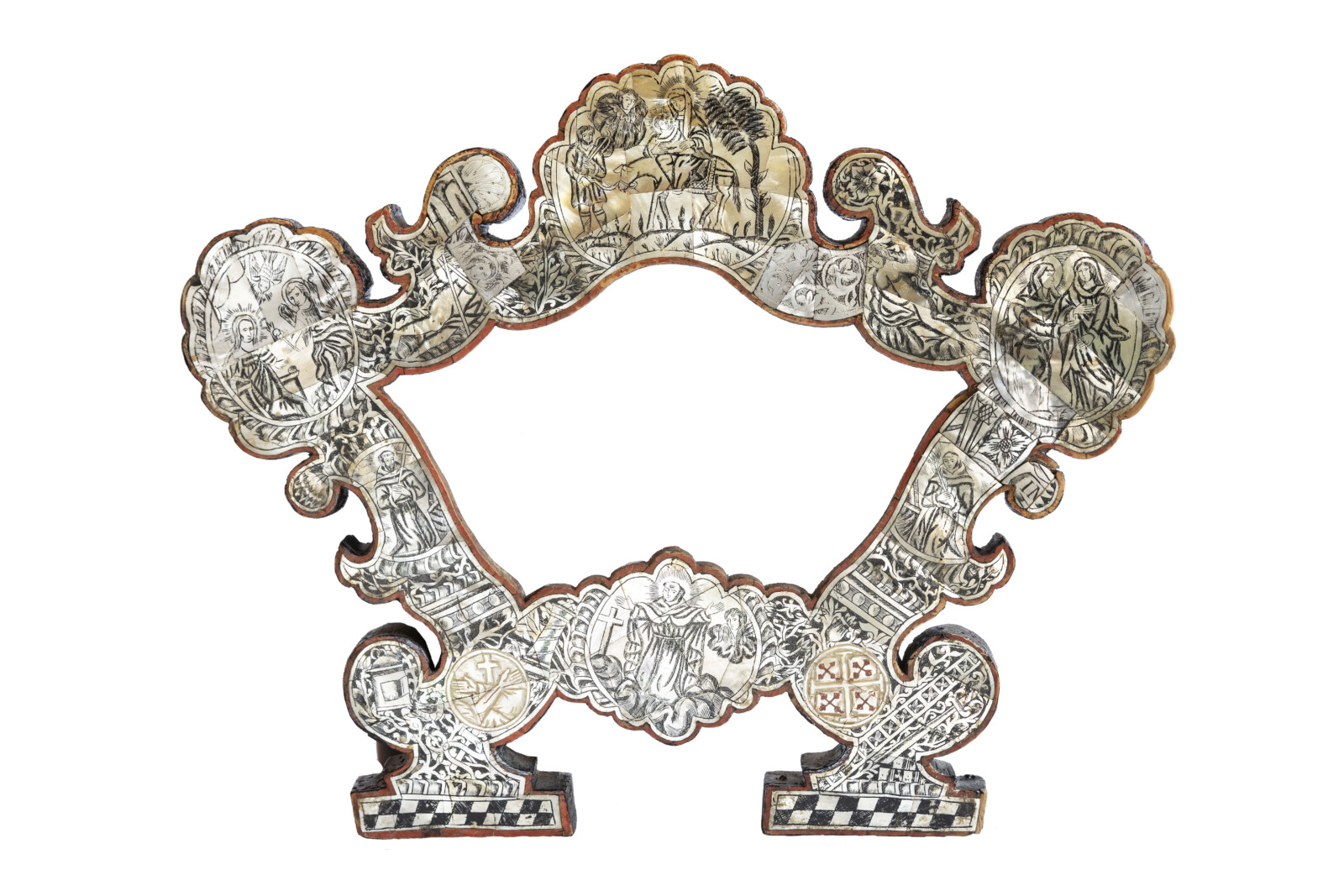
(Translated from french by Joan Rundo)



